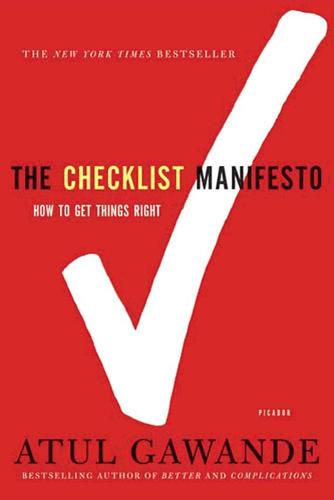
The Checklist Manifesto: How to Get Things Right
by
Atul Gawande
Published 2 Jan 2009
ALSO BY ATUL GAWANDE BETTER: A SURGEON’S NOTES ON PERFORMANCE COMPLICATIONS: A SURGEON’S NOTES ON AN IMPERFECT SCIENCE THE CHECKLIST MANIFESTO ATUL GAWANDE THE CHECKLIST MANIFESTO: HOW TO GET THINGS RIGHT METROPOLITAN BOOKS HENRY HOLT AND COMPANY NEW YORK Metropolitan Books Henry Holt and Company, LLC Publishers since 1866 175 Fifth Avenue New York, New York 10010 www.henryholt.com Metropolitan Books® and ® are registered trademarks of Henry Holt and Company, LLC. Copyright © 2009 by Atul Gawande All rights reserved. Distributed in Canada by H. B. Fenn and Company Ltd.
…
So was another step that these checklists employed, one that was quite unusual in my experience: surgical staff members were expected to stop and make sure that everyone knew one another’s names. The Johns Hopkins checklist spelled this out most explicitly. Before starting an operation with a new team, there was a check to ensure everyone introduced themselves by name and role: “I’m Atul Gawande, the attending surgeon”; “I’m Jay Powers, the circulating nurse”; “I’m Zhi Xiong, the anesthesiologist”—that sort of thing. It felt kind of hokey to me, and I wondered how much difference this step could really make. But it turned out to have been carefully devised. There have been psychology studies in various fields backing up what should have been self-evident—people who don’t know one another’s names don’t work together nearly as well as those who do.
…
Of all the people in the room as we started that operation—the anesthesiologist, the nurse anesthetist, the surgery resident, the scrub nurse, the circulating nurse, the medical student—I had worked with only two before, and I knew only the resident well. But as we went around the room introducing ourselves—“Atul Gawande, surgeon.” “Rich Bafford, surgery resident.” “Sue Marchand, nurse”—you could feel the room snapping to attention. We confirmed the patient’s name on his ID bracelet and that we all agreed which adrenal gland was supposed to come out. The anesthesiologist confirmed that he had no critical issues to mention before starting, and so did the nurses.

The Success Equation: Untangling Skill and Luck in Business, Sports, and Investing
by
Michael J. Mauboussin
Published 14 Jul 2012
Dweck, Mindset: The New Psychology of Success (New York: Random House, 2006). 19. Daniel H. Pink, Drive: The Surprising Truth About What Motivates Us (New York: Riverhead Books, 2009). 20. Atul Gawande, “The Checklist: If Something So Simple Can Transform Intensive Care, What Else Can It Do?” The New Yorker, December 10, 2007. 21. Peter Pronovost, MD PhD, and Eric Vohr, Safe Patients, Smart Hospitals: How One Doctor's Checklist Can Help Us Change Health Care from the Inside Out (New York: Hudson Street Books, 2010). 22. Atul Gawande, The Checklist Manifesto: How to Get Things Right (New York: Metropolitan Books, 2009), 114–135. 23. Daniel Boorman, “Safety Benefits of Electronic Checklists: An Analysis of Commercial Transport Accidents,” Proceedings of the 11th International Symposium on Aviation Psychology, 2001, 5–8. 24.
…
Feedback is the glue that holds together the elements of deliberate practice. Your performance improves only if you receive accurate and timely feedback. Elite performers often use coaches for that purpose. A strong link between cause and effect is essential, of course, and when it is difficult to get quality feedback, deliberate practice is less effective. Atul Gawande is a surgeon at Brigham and Women's Hospital in Boston, a staff writer for The New Yorker magazine, and an associate professor at Harvard Medical School. Gawande underwent exhaustive training to become a surgeon and, like other doctors, was left on his own to ply his craft once he finished school.
…
Yet the number of people dying from these infections was equal to the number of women dying from breast cancer each year. Pronovost was able to get doctors to use a simple checklist when installing central line catheters and thereby saved hundreds of millions of dollars and thousands of lives, more than “any laboratory scientist in the past decade,” as Atul Gawande wrote in The New Yorker.20 A checklist is a series of steps that must be carried out accurately and on time. Where cause and effect can be clearly established, checklists have been widely embraced. Examples include aviation and construction. Airplane pilots, for instance, use checklists universally and with great benefit.
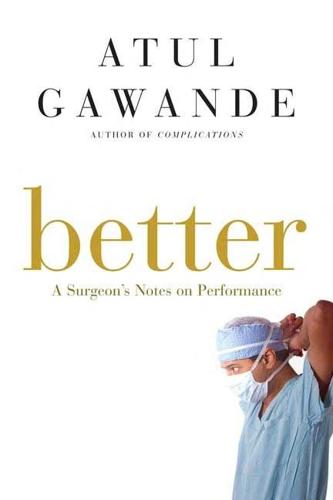
Better: A Surgeon's Notes on Performance
by
Atul Gawande
Published 2 Apr 2007
Contents TITLE COPYRIGHT INTRODUCTION PART I Diligence ON WASHING HANDS THE MOP-UP CASUALTIES OF WAR PART II Doing Right NAKED WHAT DOCTORS OWE PIECEWORK THE DOCTORS OF THE DEATH CHAMBER ON FIGHTING PART III Ingenuity THE SCORE THE BELL CURVE FOR PERFORMANCE AFTERWORD: SUGGESTIONS FOR BECOMING A POSITIVE DEVIANT NOTES ON SOURCES ACKNOWLEDGMENTS ABOUT THE AUTHOR ALSO BY ATUL GAWANDE Complications: A Surgeon's Notes on an Imperfect Science Better Better * * * A SURGEON'S NOTES ON PERFORMANCE * * * Atul Gawande Metropolitan Books Henry Holt and Company New York Metropolitan Books Henry Holt and Company, LLC Publishers since 1866 175 Fifth Avenue New York, New York 10010 www.henryholt.com Metropolitan Books(r) and (r) are registered trademarks of Henry Holt and Company, LLC. Copyright (c) 2007 by Atul Gawande All rights reserved. Distributed in Canada by H.
…
Distributed in Canada by H. B. Fenn and Company Ltd. Several of these chapters have appeared, in different form, in The New Yorker and The New England Journal of Medicine Library of Congress Cataloging-in-Publication Data Gawande, Atul. Better : a surgeon's notes on performance / Atul Gawande.--1st ed. p. cm. ISBN-13: 978-0-8050-8211-1 ISBN-10: 0-8050-8211-5 1. Gawande, Atul. 2. Internal medicine--Case studies. 3. Medicine-- Miscellanea. I. Title. RC66.G392007 616--dc22 2006046962 Henry Holt books are available for special promotions and premiums. For details contact: Director, Special Markets.
…
Thank you also to Susan Cramer, Shilpa Rao, and Katy Thompson of Brigham and Women's Hospital, Arnie Epstein of the Harvard School of Public Health, and John Sterling of Henry Holt Publishing. Finally, I want to give my deep thanks to the patients and colleagues who appear, named and unnamed, in this book. They gave me permission to try to tell their stories, and that is the most generous and vital gift of all. About the Author ATUL GAWANDE, a 2006 MacArthur Fellow, is a general surgeon at the Brigham and Women's Hospital in Boston, a staff writer for The New Yorker, an assistant professor at Harvard Medical School and the Harvard School of Public Health, and a frequent contributor to The New England Journal of Medicine. His first book, Complications: A Surgeon's Notes on an Imperfect Science, was a New York Times bestseller and a finalist for the 2002 National Book Award.
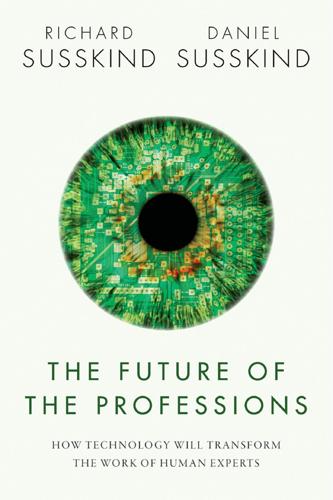
The Future of the Professions: How Technology Will Transform the Work of Human Experts
by
Richard Susskind
and
Daniel Susskind
Published 24 Aug 2015
Commentators have variously described the arrangement as a licence,31 a regulative bargain,32 and a mandate and claim.33 Alongside others, we prefer to call it ‘the grand bargain’.34 One version of this bargain, useful as a starting-point, is provided by the philosopher Donald Schön, in the following terms: In return for access to their extraordinary knowledge in matters of great human importance, society has granted them [professionals] a mandate for social control in their fields of specialization, a high degree of autonomy in their practice, and a license to determine who shall assume the mantle of professional authority.35 For physicians and surgeons, Atul Gawande, a surgeon and a writer, captures the bargain more memorably: The public has granted us extraordinary and exclusive dispensation to administer drugs to people, even to the point of unconsciousness, to cut them open, to do what would otherwise be considered assault, because we do so on their behalf—to save their lives and provide them comfort.36 Everett Hughes, a sociologist, puts it similarly, when he speaks of ‘the license of the doctor to cut and dose, of the priest to play with men’s salvation’;37 as did Adam Smith, the great political economist and philosopher, in the late eighteenth century, when he wrote that ‘[w]e trust our health to the physician; our fortune and sometimes our life and reputation to the lawyer and attorney’.38 For the legal profession, we have captured the heart of the bargain in more prosaic language: the principles underlying the exclusivity of lawyers are similar in most jurisdictions; and the pivotal justification is that it is in clients’ interests that those who advise them on the law are suitably trained and experienced.
…
, American Journal of Sociology, 70: 2 (1964), 137–58. 30 The new Company enjoyed interesting privileges, such as the annual allocation of the bodies of four executed criminals for dissection—see <http://barberscompany.org>. 31 Everett Hughes, Men and Their Work (1964), 7. 32 Keith MacDonald, The Sociology of the Professions (1995), 10. 33 Donald Schön, Educating the Reflective Practitioner (1987), 7. 34 William Alford, Kenneth Winston, and William Kirby (eds.), Prospects for the Professions in China (2011), 1. 35 Schön, Educating the Reflective Practitioner, 7, where he is citing Everett Hughes. 36 Atul Gawande, Better (2007), 148. 37 Everett Hughes, ‘The Study of Occupations’, in Sociology Today, Vol. II, ed. Robert Merton, Leonard Broom, and Leonard Cottrell (1959), 449. 38 Adam Smith, Wealth of Nations (1998), 101. 39 Richard Susskind, Tomorrow’s Lawyers (2013), 6. 40 Abbott, The System of Professions, 1. 41 See e.g.
…
In England, for example, long-term care needs for illnesses like cancer, diabetes, and dementia make up 70 per cent of health and social spending.3 Within medical communities there has for long been recognition that practitioners can work more efficiently by learning from one another. Thus, as we discuss below, the publication of medical research takes place on a vast scale, enabling physicians to build on the insights of others. While standard protocols and procedures are also invoked daily, the medical profession, as Atul Gawande has shown, expresses considerable ambivalence towards the use of simple checklists, even if their efficacy is well established.4 With the advent of the Internet, patients themselves now have access to far more health information. Platforms like NHS Choices and the WebMD network provide extensive guidance on symptoms and treatment—there are a greater number of unique visits (190 million) each month to the latter than to all the doctors working in the United States.5 Specialized search engines, like BetterDoctor, ZocDoc, and Doctor on Demand, allow people to sift databases of more than 1 million doctors, in some cases assigned an Amazon-style experience-based rating.

Black Box Thinking: Why Most People Never Learn From Their Mistakes--But Some Do
by
Matthew Syed
Published 3 Nov 2015
Select Committee Report: http://www.publications.parliament.uk/pa/cm201415/cmselect/cmpubadm/886/88602.htm. 27. http://www.deadbymistake.com/. 28. Michael Gillam et al., “The Health Care Singularity and the Age of Semantic Medicine” in The Fourth Paradigm: Data-Intensive Scientific Discovery (Microsoft, 2009). 29. Atul Gawande, The Checklist Manifesto: How to Get Things Right (London: Profile, 2010). 30. Atul Gawande, Complications. 31. http://www.nytimes.com/2009/05/26/health/26autopsy.html?pagewanted=all&_r=0. 32. Atul Gawande, Complications. 33. http://www.pbs.org/wgbh/pages/frontline/criminal-justice/post-mortem/more-deaths-go-unchecked-as-autopsy-rate-falls-to-miserably-low-levels/. 34. James Reason, A Life in Error: From Little Slips to Big Disasters (Burlington, VT: Ashgate, 2013). 35. http://www.chfg.org/resources/07_qrt04/Anonymous_Report_Verdict_and_Corrected_Timeline_Oct_07.pdf.
…
The study showed that it took doctors an average of seventeen years to adopt the new treatments for half of American patients. A major review published in the New England Journal of Medicine found that only half of Americans receive the treatment recommended by U.S. national standards.29 The problem is not that the information doesn’t exist; rather, it is the way it is formatted. As Atul Gawande, a doctor and author, puts it: The reason . . . is not usually laziness or unwillingness. The reason is more often that the necessary knowledge has not been translated into a simple, usable and systematic form. If the only thing people did in aviation was issue dense, pages-long bulletins . . . it would be like subjecting pilots to the same deluge of almost 700,000 medical journal articles per year that clinicians must contend with.
…
There are some marvelous popular books that have influenced the argument, too. These include Just Culture by Sidney Dekker, Safe Patients, Smart Hospitals by Peter Pronovost, Human Error by James Reason, Being Wrong by Kathryn Schultz, Adapt by Tim Harford, Antifragile by Nassim Nicholas Taleb, Complications by Atul Gawande, Mistakes Were Made (but Not by Me!) by Carol Tavris and Elliot Aronson, Uncontrolled by Jim Manzi, Teaming by Amy Edmondson, Where Good Ideas Come From by Steven Johnson, Creativity, Inc. by Ed Catmull, Self Theories by Carol Dweck, The Decisive Moment by Jonah Lehrer, and Philosophy and the Real World by Bryan Magee.

It Doesn't Have to Be Crazy at Work
by
Jason Fried
and
David Heinemeier Hansson
Published 1 Oct 2018
Sandra Faber Annual Reviews. An Interview with Sandra Faber (podcast). Annual Reviews Audio. Available at http://www.annualreviews.org/userimages/ContentEditor/1299600853298/SandraFaberInterviewTranscript.pdf. Accessed June 2018. Atul Gawande Cunningham, Lillian. “Atul Gawande on the Ultimate End Game.” The Washington Post, October 16, 2014. https://www.washingtonpost.com/news/on-leadership/wp/2014/10/16/atul-gawande-on-what-leadership-means-in-medicine/?utm_term=.8a7ee359539e. Accessed June 2018. Stephen Hawking Newport, Cal. “Stephen Hawking’s Productive Laziness.” Study Hacks Blog, January 11, 2017. http://calnewport.com/blog/2017/01/11/stephen-hawkings-productive-laziness/.
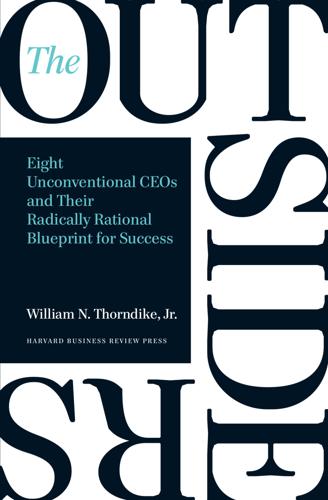
The Outsiders: Eight Unconventional CEOs and Their Radically Rational Blueprint for Success
by
William Thorndike
Published 14 Sep 2012
We will, as the Watergate informant Deep Throat suggested, “follow the money,” looking carefully at the key decisions these outsider CEOs made to maximize returns to shareholders and the lessons those decisions hold for today’s managers and entrepreneurs. FIGURE P-1 Multiple of S&P 500 total return FIGURE P-2 Multiple of peer group total return Introduction An Intelligent Iconoclasm It is impossible to produce superior performance unless you do something different. —John Templeton The New Yorker’s Atul Gawande uses the term positive deviant to describe unusually effective performers in the field of medicine. To Gawande, it is natural that we should study these outliers in order to learn from them and improve performance.1 Surprisingly, in business the best are not studied as closely as in other fields like medicine, the law, politics, or sports.
…
In today’s world of social media, instant messaging, and cacophonous cable shows, it’s increasingly hard to cut through the noise, to step back and engage Kahneman’s system 2, which is where a tool that’s been much in the news lately can come in handy. The Outsider’s Checklist Checklists have proved to be extremely effective decision-making tools in fields as diverse as aviation, medicine, and construction. Their apparent simplicity belies their power, and thanks to Atul Gawande’s excellent recent book, The Checklist Manifesto, their use is a hot topic these days.1 Checklists are a particularly effective form of “choice architecture,” working to promote analysis and rationality and eliminate the distractions that often cloud complex decisions. They are a systematic way to engage system 2, and for CEOs, they can be highly effective vaccines, inoculating against conventional wisdom and the institutional imperative.
…
. ** Malone managed TCI to intentionally minimize reported earnings; therefore, this metric does not apply to him. Notes Preface 1. Berkshire Hathaway annual reports, 1987. 2. Ibid. 3. Warren E. Buffett, “The Superinvestors of Graham and Doddville,” Hermes Magazine, April 1984. Introduction 1. Atul Gawande, “The Bell Curve,” The New Yorker, December 6, 2004. See also Richard Pascale, Jerry Sternin, and Monique Sternin, The Power of Positive Deviance: How Unlikely Innovators Solve the World’s Toughest Problems (Boston: Harvard Business Press, 2010). 2. Michael Lewis, Moneyball: The Art of Winning an Unfair Game (New York: W.W.

Being Mortal: Medicine and What Matters in the End
by
Atul Gawande
Published 6 Oct 2014
But her devotion to the book remained unwavering, and she went through every draft with me meticulously, working paragraph by paragraph to make sure I’d got every part as true and right as I could. Sara’s dedication is the reason this book says what I wanted it to say. And that is why it is dedicated to her. Also by Atul Gawande Complications: A Surgeon’s Notes on an Imperfect Science Better: A Surgeon’s Notes on Performance The Checklist Manifesto: How to Get Things Right About the Author ATUL GAWANDE is the author of three bestselling books: Complications, a finalist for the National Book Award; Better, selected by Amazon.com as one of the ten best books of 2007; and The Checklist Manifesto. He is also a surgeon at Brigham and Women’s Hospital in Boston, a staff writer for The New Yorker, and a professor at Harvard Medical School and the Harvard School of Public Health.
…
Copyright © 2014 by Atul Gawande. All rights reserved. For information, address Henry Holt and Co., 175 Fifth Avenue, New York, N.Y. 10010. www.henryholt.com Cover design by Nate Durrant/Elixir Design eBooks may be purchased for business or promotional use. For information on bulk purchases, please contact Macmillan Corporate and Premium Sales Department by writing to MacmillanSpecialMarkets@macmillan.com. The Library of Congress has cataloged the print edition as follows: Gawande, Atul, author. Being mortal : medicine and what matters in the end / Atul Gawande. — First edition. p. ; cm.
…
To Sara Bershtel Contents Title Page Copyright Notice Dedication Epigraph Introduction 1 • The Independent Self 2 • Things Fall Apart 3 • Dependence 4 • Assistance 5 • A Better Life 6 • Letting Go 7 • Hard Conversations 8 • Courage Epilogue Notes on Sources Acknowledgements Also by Atul Gawande About the Author Copyright I see it now—this world is swiftly passing. —the warrior Karna, in the Mahabharata They come to rest at any kerb: All streets in time are visited. —Philip Larkin, “Ambulances” Introduction I learned about a lot of things in medical school, but mortality wasn’t one of them.

The Laws of Medicine: Field Notes From an Uncertain Science
by
Siddhartha Mukherjee
Published 12 Oct 2015
Abraham Verghese A doctor’s touch Modern medicine is in danger of losing a powerful, old-fashioned tool: human touch. Physician and writer Abraham Verghese describes our strange new world where patients are merely data points and calls for a return to the traditional one-on-one physical exam. Atul Gawande How do we heal medicine? Our medical systems are broken. Doctors are capable of extraordinary (and expensive) treatments, but they are losing their core focus: actually treating people. Doctor and writer Atul Gawande suggests we take a step back and look at new ways to do medicine—with fewer cowboys and more pit crews. Brian Goldman Doctors make mistakes. Can we talk about that? Every doctor makes mistakes.

Quantitative Value: A Practitioner's Guide to Automating Intelligent Investment and Eliminating Behavioral Errors
by
Wesley R. Gray
and
Tobias E. Carlisle
Published 29 Nov 2012
Joel Greenblatt, “Adding Your Two Cents May Cost a Lot Over the Long Term.” Perspectives, Morningstar, January 16, 2012; http://news.morningstar.com/articlenet/SubmissionsArticle.aspx?submissionid=134195.xml&part=2. 15. Atul Gawande, “The Checklist.” The New Yorker, Annals of Medicine (December 10, 2007); www.newyorker.com/reporting/2007/12/10/071210fa_fact_gawande?currentPage=2. 16. Atul Gawande, The Checklist Manifesto: How to Get Things Right (New York: Metropolitan Books, 2009). PART TWO Margin of Safety—How to Avoid a Permanent Loss of Capital In Part Two, we describe the first step in our checklist: how to avoid stocks at risk of a permanent loss of capital.
…
How can we create a more complex investment process and expect to maintain discipline when investors have a hard time sticking to a simple strategy like the Magic Formula? We next introduce the concept of a checklist, which is a simple way to break a necessarily complicated process into manageable pieces that can be repeated without errors and with a high success ratio. The Case for a Checklist Atul Gawande, a surgeon and professor of surgery at Harvard Medical School, wrote an article in 2007 for The New Yorker magazine called “The Checklist,”15. in which he described the manner in which intensivists successfully manage the incredibly complex range of tasks required to keep alive a patient in intensive care.
…
FIGURE 11.3 Invested Growth of EBIT Enterprise Value Separated into High-Quality and Low-Quality Portfolios (1974 to 2011) Figure 11.3 demonstrates that separating the value decile of EBIT enterprise multiple stocks into high quality and low quality concentrates the better-performing stocks in the high-quality portfolio, which outperforms the whole EBIT enterprise multiple decile and the low-quality portfolio. OUR FINAL QUANTITATIVE VALUE CHECKLIST In Chapter 2, we sought to make the case for employing an investment checklist using Atul Gawande's intensive care analogy. Recall that Peter Pronovost, the intensivist at Johns Hopkins Hospital who pushed so hard for the widespread adoption of checklists, drew his inspiration from the U.S. Army Air Corps's experience with the WWII-era test flight of the Boeing Corporation's B-17 model. Prior to the test flight, Boeing's model had been the favored plane, beating out competing airplane designers vying to build the next-generation long-range bomber.

This Chair Rocks: A Manifiesto Against Ageism
by
Ashton Applewhite
Published 10 Feb 2016
Now director of geriatrics at Toronto’s Mount Sinai and University Health Network hospitals in Toronto, Sinha blames institutionalized ageism for the geriatrician shortage: “A culture that devalues the old places little value on those who work with them.”18 Internalized ageism on the part of patients perpetuates this prejudice: God forbid anyone find out you’re in the care of a geriatrician! Age denial seals the regrettable deal. Consulting a geriatrician, as Dr. Atul Gawande points out in his book Being Mortal, “requires each of us to contemplate the unfixables in our life, the decline we will unavoidably face, in order to make the small changes necessary to reshape it. When the prevailing fantasy is that we can be ageless, the geriatrician’s uncomfortable demand is that we accept we are not.”19 Medical students also assume, wrongly, that practicing geriatrics will be depressing.
…
Ask first, in a neutral way that makes the offer easy to accept or decline. Dependence needn’t mean powerlessness. It’s different from true incompetence, a distinction that mitigates what age scholar Margaret Cruikshank calls “age shame.” Learned helplessness can actually kill, while having a choice, is hugely significant. Dr. Atul Gawande frames this in terms of remaining the writers of our own stories, and having them reflect our characters and our deepest needs. The dying, he writes in Being Mortal, “ask only to be permitted, insofar as possible, to keep shaping the story of their life in the world—to make choices and sustain connections to others according to their own priorities.
…
No one wants a long and costly exit hooked up to machines, and opting out should be easier. Making dying better, however, is no substitute for making living better in those last days, weeks, or months. On a personal level, that means resisting “duty to die” thinking. On a political level, it means effecting large-scale social change. In his invaluable book Being Mortal, Dr. Atul Gawande writes, “Our most cruel failure in how we treat the sick and the aged is the failure to recognize that they have priorities beyond merely being safe and living longer; that the chance to shape one’s story is essential to sustaining meaning in life; that we have the opportunity to refashion our institutions, our culture, and our conversations in ways that transform the possibilities for the last chapters of everyone’s lives.”18 Ideally, that means making space for an ongoing conversation about what matters most to us.
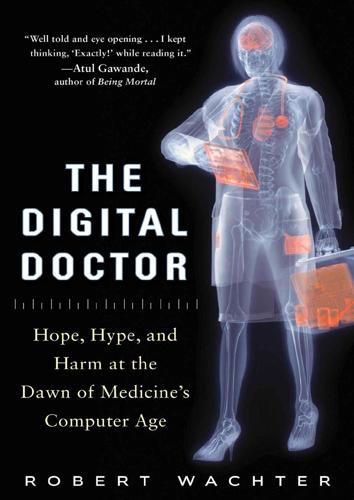
The Digital Doctor: Hope, Hype, and Harm at the Dawn of Medicine’s Computer Age
by
Robert Wachter
Published 7 Apr 2015
Advance Praise for The Digital Doctor “The Digital Doctor is the eye-opening, well-told, and frustrating story of how computerization is pulling medicine apart with only a vague promise of putting it back together again. I kept thinking, ‘Exactly!’ while reading it, and that is a measure of Wachter’s accomplishment in telling the tale. This is the real story of what it’s like to practice medicine in the midst of a painful, historic, and often dangerous transition.” —Atul Gawande author of Being Mortal and The Checklist Manifesto “As scientific breakthroughs and information technology transform the practice of medicine, Bob Wachter is one of the few people with the insight, credibility, and investigative skills to go from the trenches to the observation booth. The Digital Doctor is first of all a personal journey, as Wachter travels the country, meets with key players who are shaping our future, and wrestles with their views.
…
Let’s take a closer look at Watson, and at a tiny competitor that has taken a different approach. 12 Khosla later softened his prediction slightly, writing in 2014, “This is not to say that 80 percent of physicians will be replaced, but rather 80 percent of what they currently do might be replaced, leading to new possibilities and functions for the physicians.” Chapter 10 David and Goliath There is a science in what we do, yes, but also habit, intuition, and sometimes plain old guessing. —Atul Gawande, Complications: A Surgeon’s Notes on an Imperfect Science When IBM announced that Watson’s first post-Jeopardy focus would be healthcare, the media immediately ran with the Man Versus Machine meme, dubbing the computer “Dr. Watson.” “Meet Dr. Watson: Jeopardy Winning Supercomputer Heads into Healthcare,” proclaimed one headline.
…
But, he continued, “Once we have readings on 100 million people, it will become more valuable. It’s not the data. It’s the complex math that creates insights about that data.” And yet … and yet, as I reflect on the complexity of the problem, my instincts tell me that Khosla might not quite get it. In The Checklist Manifesto, the author and surgeon Atul Gawande recounted a study that vividly illustrates this complexity. In a single year, the trauma centers in the state of Pennsylvania saw 41,000 patients, who had 1,224 different injuries. Taken together, there were 32,261 unique combinations of injuries. Gawande described the findings to me in more detail: Someone stabbed in the eye, and stabbed in the belly.
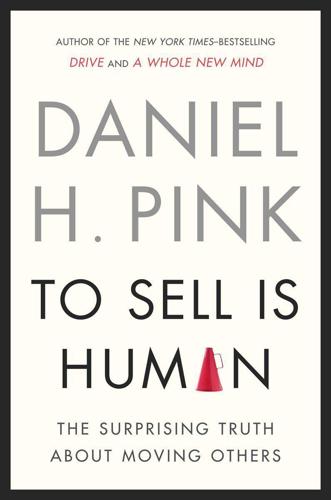
To Sell Is Human: The Surprising Truth About Moving Others
by
Daniel H. Pink
Published 1 Dec 2012
Over a two-week period, these recruits, who weren’t told the nature of the study, covertly recorded when doctors, nurses, and other health care staff faced a “hand-hygiene opportunity” and whether these employees actually hygiened their hands when the opportunity arose. Once again, the personal-consequences sign had zero effect. But the sign appealing to purpose boosted hand washing by 10 percent overall and significantly more for the physicians.14 Clever signs alone won’t eliminate hospital-acquired infections. As surgeon Atul Gawande has observed, checklists and other processes can be highly effective on this front.15 But Grant and Hofmann reveal something equally crucial: “Our findings suggest that health and safety messages should focus not on the self, but rather on the target group that is perceived as most vulnerable.”16 Raising the salience of purpose is one of the most potent—and most overlooked—methods of moving others.
…
See also “Patient Photos Spur Radiologist Empathy and Eye for Detail,” RSNA Press Release, December 2, 2008; Dina Kraft, “Radiologist Adds a Human Touch: Photos,” New York Times, April 7, 2009. 7. Turner and Hadas-Halpern, “The Effects of Including a Patient’s Photograph.” 8. “Patient Photos Spur Radiologist Empathy and Eye for Detail,” ScienceDaily, December 14, 2008, available at http://bit.ly/JbbEQt. 9. See Atul Gawande, The Checklist Manifesto: How to Get Things Right (New York: Picador, 2011). 10. See, for instance, “Disconnection from Patients and Care Providers: A Latent Error in Pathology and Laboratory Medicine: An Interview with Stephen Raab, MD,” Clinical Laboratory News 35, no. 4 (April 2009). 11. Sally Herships, “The Power of a Simple ‘Thank You,’” Marketplace Radio, December 22, 2010. 12.
…
Hospitals, 2002,” Public Health Reports 122, no. 2 (March–April 2007): 160–66. 13. Adam M. Grant and David A. Hofmann, “It’s Not All About Me: Motivating Hand Hygiene Among Health Care Professionals by Focusing on Patients,” Psychological Science 22, no. 12 (December 2011): 1494–99. 14. Ibid., 497. 15. Atul Gawande, “The Checklist,” New Yorker, December 10, 2007; Gawande, The Checklist Manifesto: How to Get Things Done Right (New York: Picador, 2011). 16. Grant and Hofmann, “It’s Not All About Me,” 498. 17. See, for instance, Dan Ariely, Anat Bracha, and Stephan Meier, “Doing Good or Doing Well? Image Motivation and Monetary Incentives in Behaving Prosocially,” American Economic Review 99, no. 1 (March 2009): 544–55; Stephan Meier, The Economics of Non-Selfish Behaviour: Decisions to Contribute Money to Public Goods (Cheltenham, UK: Edward Elgar Publishing Limited, 2006); Stephan Meier, “A Survey of Economic Theories and Field Evidence on Pro-Social Behavior,” in Bruno S.
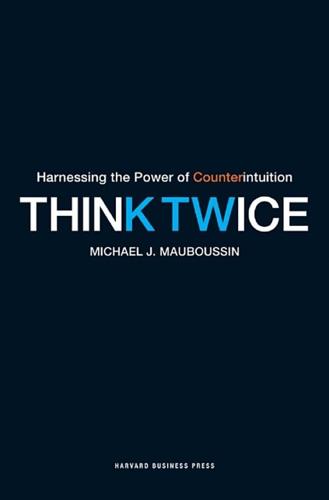
Think Twice: Harnessing the Power of Counterintuition
by
Michael J. Mauboussin
Published 6 Nov 2012
Philip Zimbardo, The Lucifer Effect: Understanding How Good People Turn Evil (New York: Random House, 2007). 25. Ibid., 210–221. 26. Peter F. Drucker, Management Challenges for the 21st Century (New York: HarperBusiness, 1999), 74. 27. David Leonhardt, “Why Doctors So Often Get It Wrong,” New York Times, February 22, 2006. 28. Atul Gawande, “The Checklist,” The New Yorker, December 10, 2007, 86–95; Atul Gawande, “A Lifesaving Checklist,” New York Times, December 30, 2007; and Peter Pronovost, “Testimony before Government Oversight Committee,” April 16, 2008. 29. Bargh, Chen, and Burrows, “Automaticity of Social Behavior,” 241. 30. Zimbardo, The Lucifer Effect, 451–456. 31.
…
It’s not that the doctors don’t know what to do—for the most part, they know their stuff—it’s just they don’t always follow all the steps they should. When asked why doctors generally shun checklists, Joseph Britto, a former doctor, quipped, “Unlike pilots, doctors don’t go down with their planes.”27 Dr. Atul Gawande, a surgeon and writer, explained how regulatory inertia trumped good decision making, even when the consequence was a matter of life and death.28 Gawande told of Dr. Peter Pronovost, an anesthesiologist and critical-care specialist at the Johns Hopkins Hospital. The death of his father because of a medical error encouraged Pronovost to dedicate his career to ensuring the safety of patients.
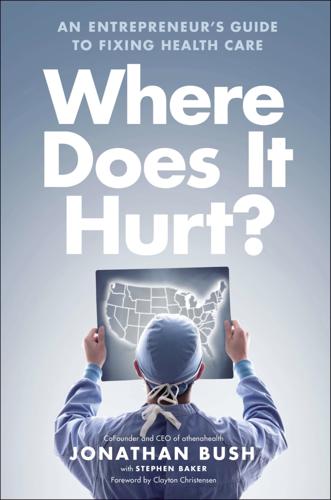
Where Does It Hurt?: An Entrepreneur's Guide to Fixing Health Care
by
Jonathan Bush
and
Stephen Baker
Published 14 May 2014
But many doctors now find their time and efforts swallowed up by chores they hate. This deprives them and their patients of their deepest connections, and leads to discontent. A 2013 study by Jackson Healthcare shows that a stunning 59 percent of physicians would not recommend a medical career to young people. Atul Gawande, a surgeon and one of the most insightful writers about health care, says that primary care doctors across the country are suffering from burnout. “We’ve lost the joy in taking care of patients,” he says. How do we get it back, for them and for us? That’s what this book is about. I’ve divided it into three parts.
…
And outsiders are precisely what health care needs. Health care is starving for efficiency experts, customer service geniuses, retail mavens, people who have created thriving and modern businesses in other industries, and will apply their expertise to health care. In a brilliant New Yorker article, “Big Med,” published on August 13, 2012, Atul Gawande explores efficiency and quality control at The Cheesecake Factory restaurants. They have it down to a science. This is the work of brainy product managers, the same kind who figure out how to sell us two-year phone subscriptions and supersized burgers. They’re the outsiders who should be landing at ACOs.
…
Ralph de la Torre, John Rugge, Ken Konsker, and John Briggs all give purpose and focus to my fevers by using the nascent health information backbone we are building to deliver better, more affordable care to their patients. John Randazzo and Rushika Fernandopulle (who are not clients, but should be!) continue to provoke and challenge us all to think differently about health care. Atul Gawande, Clay Christensen, and Abraham Verghese are each, in my view, the deans of health care storytelling. I have learned and continue to learn so much in the presence of their ideas. Finally, my original debt of gratitude, at the top of the debt food chain, goes to the original athenistas. Mitch Besser and the partners of Athena Women’s Health and the Birthplace took an absurd risk entrusting their medical group to some kooky kids sharing laptops.

Critical: Science and Stories From the Brink of Human Life
by
Matt Morgan
Published 29 May 2019
‘It is no wonder that we intensive care doctors feel unsure of ourselves when expected to assimilate the 13,000 diagnoses, 6,000 drugs and 4,000 surgical procedures . . .’ Fitzpatrick, L. Atul Gawande: How to Make Doctors Better. Time (2010). ‘The cream contained aspirin as the active ingredient, the willow-bark extract originally used by ancient Egyptians as a remedy for aches and pains.’ Vainio, H. & Morgan, G. Aspirin for the second hundred years: new uses for an old drug. Pharmacol. Toxicol. 81, 151–152 (1997). ‘Atul Gawande’s paradigm-shifting book, The Checklist Manifesto.’ Gawande, A. (2010). The Checklist Manifesto: How To Get Things Right. New York: Metropolitan Books.
…
Intensive care nurtures a robust system that should be able to fail gracefully not catastrophically. It should compensate, have resilience and redundancy, in anticipation of human error. However, it is in no way perfect and has a long way to go. These improvements have been achieved through three strands of innovation. Atul Gawande’s paradigm-shifting book, The Checklist Manifesto, introduced to medicine simple yet effective techniques you already use when shopping to remember those essential items. His introduction of the World Health Organization’s ‘Surgical Safety Checklist’ has saved millions of lives by ensuring that simple critical steps, such as checking a patient’s name and allergies, are carried out for each and every operation.
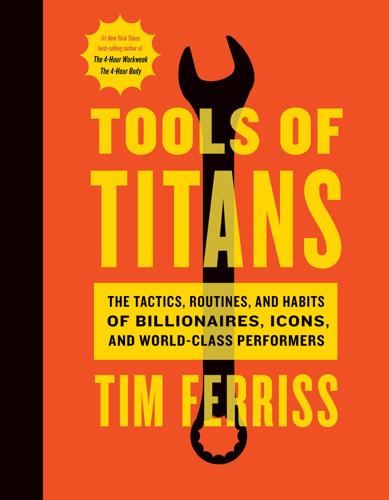
Tools of Titans: The Tactics, Routines, and Habits of Billionaires, Icons, and World-Class Performers
by
Timothy Ferriss
Published 6 Dec 2016
My network, partially built through writing, is my net worth. If you want to increase your income 10x instead of 10%, the best opportunities are often seemingly out of left field (e.g., books → startups). Checklists Ramit and I are both obsessed with checklists and love a book by Atul Gawande titled The Checklist Manifesto. I have this book on a shelf in my living room, cover out, as a constant reminder. Atul Gawande is also one of Malcolm Gladwell’s (page 572) favorite innovators. Ramit builds checklists for as many business processes as possible, which he organizes using software called Basecamp. Google “entrepreneurial bus count” for a good article on why checklists can save your startup
…
Here are the top 17—everything with 3 or more mentions—in descending order of frequency: Tao Te Ching by Lao Tzu (5 mentions) Atlas Shrugged by Ayn Rand (4) Sapiens by Yuval Noah Harari (4) Siddhartha by Hermann Hesse (4) The 4-Hour Workweek by Tim Ferriss (4) The Checklist Manifesto by Atul Gawande (4) Dune by Frank Herbert (3) Influence by Robert Cialdini (3) Stumbling on Happiness by Daniel Gilbert (3) Superintelligence by Nick Bostrom (3) Surely You’re Joking, Mr. Feynman! by Richard P. Feynman (3) The 4-Hour Body by Tim Ferriss (3) The Bible (3) The Hard Thing About Hard Things by Ben Horowitz (3) The War of Art by Steven Pressfield (3) Watchmen by Alan Moore (3) Zero to One by Peter Thiel with Blake Masters (3) Enjoy!
…
Wilson), Merchant Princes: An Intimate History of Jewish Families Who Built Great Department Stores (Leon A. Harris), Tinker, Tailor, Soldier, Spy; Little Drummer’s Girl; The Russia House; The Spy Who Came in from the Cold (John le Carré), The Big Short: Inside the Doomsday Machine (Michael Lewis), The Checklist Manifesto (Atul Gawande), all of Lee Child’s books Godin, Seth: Makers; Little Brother (Cory Doctorow), Understanding Comics (Scott McCloud), Snow Crash; The Diamond Age (Neal Stephenson), Dune (Frank Herbert), Pattern Recognition (William Gibson) AUDIOBOOKS: The Recorded Works (Pema Chödrön), Debt (David Graeber), Just Kids (Patti Smith), The Art of Possibility (Rosamund Stone Zander and Benjamin Zander), Zig Ziglar’s Secrets of Closing the Sale (Zig Ziglar), The War of Art (Steven Pressfield) Goldberg, Evan: Love You Forever (Robert Munsch), Watchmen; V for Vendetta (Alan Moore), Preacher (Garth Ennis), The Hitchhiker’s Guide to the Galaxy (Douglas Adams), The Little Prince (Antoine de Saint-Exupéry) Goodman, Marc: One Police Plaza (William Caunitz), The 4-Hour Workweek (Tim Ferriss), The Singularity Is Near (Ray Kurzweil), Superintelligence: Paths, Dangers, Strategies (Nick Bostrom) Hamilton, Laird: The Bible, Natural Born Heroes (Christopher McDougall), Lord of the Rings (J.R.R.
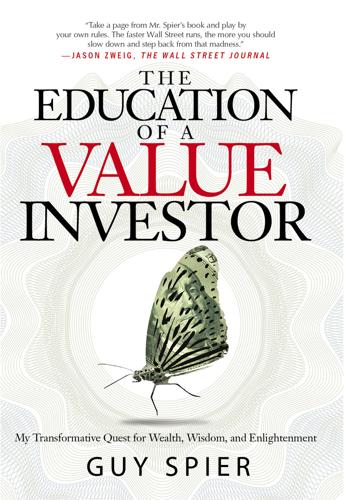
The Education of a Value Investor: My Transformative Quest for Wealth, Wisdom, and Enlightenment
by
Guy Spier
Published 8 Sep 2014
Before I make the final decision to buy any stock, I turn to my checklist in a last-ditch effort to prevent my unreliable brain from overlooking any potential warning signs that I might have missed. The checklist is the final circuit breaker in my decision-making process. The idea for this didn’t originate with me, but with Atul Gawande. A former Rhodes Scholar at Oxford, he is now a surgeon at Brigham and Women’s Hospital in Boston, a professor of surgery at Harvard Medical School, and a renowned author. He’s a remarkable blend of practitioner and thinker, and also an exceptionally nice guy. In December 2007, Gawande published a story in The New Yorker entitled “The Checklist,” which drew heavily on his experience as a surgeon to explore a problem that is both profound and practical.
…
By now, I’m used to the fact that Mohnish is quicker on the uptake than I am. I console myself by contemplating a sage observation of Buffett’s: “The key to life is figuring out who to be the batboy for.” As I realized long ago, there’s no dishonor in being Mohnish’s batboy. Far from it. And while I’m busy cloning Mohnish Pabrai, he’s busy cloning Atul Gawande. Mohnish pursued the checklist idea with ferocious intensity and rigor. He began by marshaling a group of us to recall a slew of investing mistakes we had made. In each case, we had to work out why they had happened and if there was a cause that we should have seen beforehand. Sometimes I would look back at a situation where I had missed some vital clue, shake my head, and say, “How did I not see that?”
…
Or, A Good Hard Look at Wall Street by Fred Schwed Your Money and Your Brain: How the New Science of Neuroeconomics Can Help Make You Rich by Jason Zweig Literature 100 Years of Solitude by Gabriel García Márquez Hamlet by William Shakespeare Jonathan Livingston Seagull by Richard Bach Oliver Twist by Charles Dickens Zen and the Art of Motorcycle Maintenance: An Inquiry into Values by Robert Pirsig Miscellaneous Autobiography: The Story of My Experiments with the Truth by Mahatma Gandhi City Police by Jonathan Rubinstein Endurance: Shackleton’s Incredible Voyage by Alfred Lansing Long Walk to Freedom: The Autobiography of Nelson Mandela by Nelson Mandela Metaphors We Live By by George Lakoff and Mark Johnson Reagan: A Life in Letters by Ronald Reagan The Autobiography of Benjamin Franklin by Benjamin Franklin The Checklist Manifesto: How to Get Things Right by Atul Gawande The Hero with a Thousand Faces by Joseph Campbell The New British Constitution by Vernon Bogdanor The Power of Myth by Joseph Campbell with Bill Moyers Vor 1914: Erinnerungen an Frankfurt geschrieben in Israel by Selmar Spier Walden: or, Life in the Woods by Henry David Thoreau Why America Is Not a New Rome by Vaclav Smil Philosophy and Theology A Theory of Justice by John Rawls Anarchy, the State, and Utopia by Robert Nozick Destination Torah: Reflections on the Weekly Torah Readings by Isaac Sassoon Halakhic Man by Joseph Soloveitchik Letters from a Stoic by Lucius Annaeus Seneca Man’s Search for Meaning by Viktor Frankl Meditations by Marcus Aurelius Pirke Avot: A Modern Commentary on Jewish Ethics by Leonard Kravits and Kerry Olitzky Plato, not Prozac!
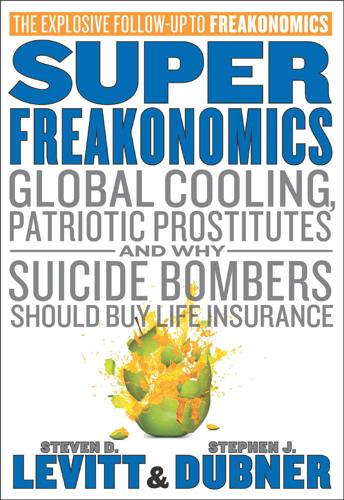
SuperFreakonomics
by
Steven D. Levitt
and
Stephen J. Dubner
Published 19 Oct 2009
. / 140 The sabbatical backlash: see Solomon Zeitlin, “Prosbol: A Study in Tannaitic Jurisprudence,” The Jewish Quarterly Review 37, no. 4 (April 1947). (Thanks to Leon Morris for the tip.) FORCEPS HOARDING: See James Hobson Aveling, The Chamberlens and the Midwifery Forceps (J. & A. Churchill, 1882); Atul Gawande, “The Score: How Childbirth Went Industrial,” The New Yorker, October 2, 2006; and Stephen J. Dubner, “Medical Failures, and Successes Too: A Q&A with Atul Gawande,” Freakonomics blog, The New York Times, June 25, 2007. MORE FOOD, MORE PEOPLE: See “The World at Six Billion,” United Nations, 1999; Mark Overton, Agricultural Revolution in England: The Transformation of the Agrarian Economy, 1500–1850 (Cambridge University Press, 1996); and Milton Friedman and Rose Friedman, Free to Choose (Harvest, 1990; originally published 1979).
…
The forceps worked so well that Chamberlen kept it a secret, sharing it only with sons and grandsons who continued in the family business. It wasn’t until the mid–eighteenth century that the forceps passed into general use. What was the cost of this technological hoarding? According to the surgeon and author Atul Gawande, “it had to have been millions of lives lost.” The most amazing thing about cheap and simple fixes is they often address problems that seem impervious to any solution. And yet almost invariably, a Semmelweis or a team of Semmelweises ride into view and save the day. History is studded with examples.
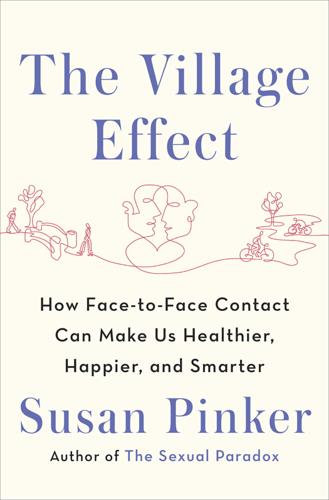
The Village Effect: How Face-To-Face Contact Can Make Us Healthier, Happier, and Smarter
by
Susan Pinker
Published 30 Sep 2013
Peggy Reynolds and George Kaplan, “Social Connections and Risk for Cancer: Prospective Evidence from the Alameda County Study,” Behavioral Medicine 16, no. 3 (1990). 9. In physician and New Yorker writer Atul Gawande’s remarkable account of solitary confinement, he cites a US military study of nearly 150 naval aviators who returned from imprisonment and torture in Vietnam; they reported that they had found social isolation far more agonizing and damaging than any of the physical abuse they were subjected to. Gawande’s article reports that prisoners put in “the hole” (solitary confinement) in American prisons, often become psychotic, catatonic, or suicidal when deprived of all social contact. Atul Gawande, “Hellhole: The United States Holds Tens of Thousands of Inmates in Long-Term Solitary Confinement.
…
These terrible deaths prompted a public outcry in Canada for school expulsions and legal sanctions for adolescents who cyberbully, isolate, or otherwise torment their classmates. Meanwhile, suicides of children who have been bullied in the United States and elsewhere have led to criminal charges and recent changes in school and public policy.16 Torment is not too strong a word. Writing about the impact of solitary confinement in US prisons, physician Atul Gawande quotes John McCain, the former Republican presidential candidate who spent two of his five years in a Vietnamese POW camp in a tiny isolation cell, cut off from all human contact. “It crushes your spirit and weakens your resistance more effectively than any other form of mistreatment,” Gawande writes.
…
Masten et al., “Neural Correlates of Social Exclusion During Adolescence: Understanding the Distress of Peer Rejection,” Scan 4 (2009); George Slavich et al., “Neural Sensitivity to Social Rejection Is Associated with Inflammatory Responses to Social Stress,” Proceedings of the National Academy of Sciences of the United States of America 107, no. 33 (2010). 18. Atul Gawande, “Hellhole: The United States Holds Tens of Thousands of Inmates in Long-Term Solitary Confinement. Is This Torture?” New Yorker, March 30, 2009. 19. Lisa Harnack et al., “Guess Who’s Cooking: The Role of Men in Meal Planning, Shopping, and Preparation in US Families,” Journal of the American Dietetic Association 98, no. 9 (1998).
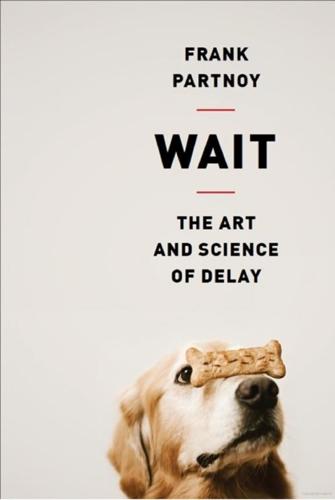
Wait: The Art and Science of Delay
by
Frank Partnoy
Published 15 Jan 2012
One of the biggest differences between financial and medical decisions is that doctors must swing at every pitch. Gurpreet Dhaliwal can’t turn away those patients he doesn’t quite understand. He can’t wait for the easiest possible diagnosis. He is obligated to try to help everyone. He might see nine cases that are like routine fastballs. But he also has to be ready to hit the one curve. In Atul Gawande’s provocative and insightful book The Checklist Manifesto, he shows how doctors can use checklists to save lives by reducing mistakes in medical decision-making, particularly during hospital surgery.12 He also advocates checklists for other nonmedical professionals, including airline pilots and financial professionals.
…
A checklist adds a speed bump before a task, to force surgeons or builders or airline pilots or investors to stop and think through what they are about to do before they do it. A checklist is an example of how skilled professionals move back and forth between thinking about the present and the future. Atul Gawande’s surgery checklist includes three “pause points”: before anesthesia, before incision, and before leaving the operating room. Each pause is designed to last no more than a minute—just long enough for members of the team to make basic checks (confirm the patient’s identity at the beginning; check for all the needles and sponges at the end).
…
For the MBIA story, see Christine S. Richard, Confidence Game: How Hedge Fund Manager Bill Ackman Called Wall Street’s Bluff (Bloomberg Press, 2010). 10. Ibid., p. 46. 11. Jerome Kassirer, John Wong, and Richard Kopelman, Learning Clinical Reasoning, 2nd ed. (Lippincott Williams & Wilkins, 2010), p. xvii–xviii. 12. Atul Gawande, The Checklist Manifesto: How to Get Things Right (Picador, 2009). 13. Ibid., p. 154. 14. The concept of a diagnostic time-out is raised in John W. Ely, Mark L. Graber, and Pat Croskerry, “Checklists to Reduce Diagnostic Errors,” Academic Medicine 86(3, 2011): 1–7, an excellent recent article exploring the use of checklists in diagnostic decision-making, particularly under uncertainty and time pressure. 15.
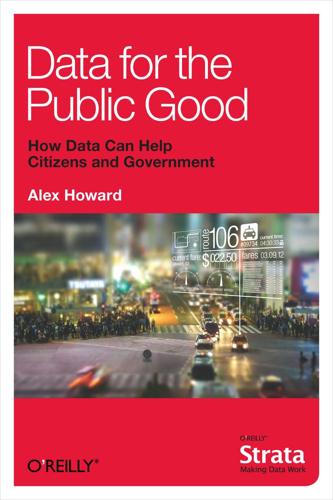
Data for the Public Good
by
Alex Howard
Published 21 Feb 2012
Around the world, developers, GIS engineers, online media professionals and volunteers collaborated on information technology projects to support disaster relief for post-earthquake Haiti, mapping streets on OpenStreetMap and collecting crisis data on Ushahidi. Healthcare What happens when patients find out how good their doctors really are? That was the question that Harvard Medical School professor Dr. Atul Gawande asked in the New Yorker, nearly a decade ago. The narrative he told in that essay makes the history of quality improvement in medicine compelling, connecting it to the creation of a data registry at the Cystic Fibrosis Foundation in the 1950s. As Gawande detailed, that data was privately held.
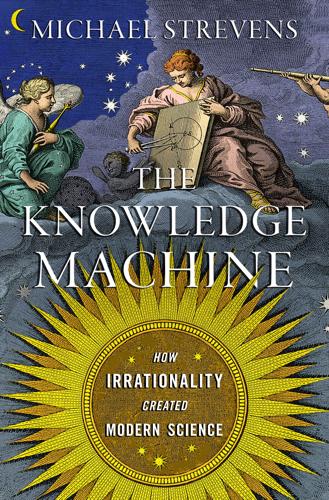
The Knowledge Machine: How Irrationality Created Modern Science
by
Michael Strevens
Published 12 Oct 2020
In that case, I seem to have run into something of a problem: a code is not much use if it is ignored just when it matters most. Chapter 2 is not yet over and methodism is already battered, down on its knees, begging for mercy. To the rescue comes an idea entertained by many concerned scientists, advanced by Karl Popper, and articulated here by the writer and surgeon Atul Gawande: Individual scientists . . . can be famously bull-headed, overly enamored of pet theories, dismissive of new evidence, and heedless of their fallibility. . . . But as a community endeavor, [science] is beautifully self-correcting. That “science is self-correcting” is often heard in the wake of revelations of fraud or methodological recklessness.
…
Science surely does have its malefactors. The rules are sometimes flouted, sometimes deliberately gamed, not least by the leading lights—as on occasion by Newton, Pasteur, Mendel, Haeckel, Millikan, and perhaps Eddington. But even if the advocates of science’s powers of self-correction, such as Karl Popper and Atul Gawande, are right to think that such wrongdoing is sporadic or manageable or for some other reason does only limited damage to the scientific enterprise, they cannot appeal to an objective logic to explain science’s success. There is no such logic; the evaluation of hypotheses in the light of evidence is thoroughly subjective, fluid all the way down to its core.
…
Sometimes evidence might even be manipulated, as historians have suspected of “facts” reported by Mendel, Haeckel, Millikan, and Newton. If Baconian convergence is to occur, science must somehow neutralize bad data. Theorists who say that science is “self-correcting”—I quoted both Karl Popper and Atul Gawande to this effect in Chapter 2—believe that when it really matters, bad data is eventually recognized as such. In a sense, that is indeed what happened with the photographs from the Brazilian astrographic: now that we know that Einstein was right (or at least, more right than Newton), we can look back and say that the astrographic setup must have been faulty.
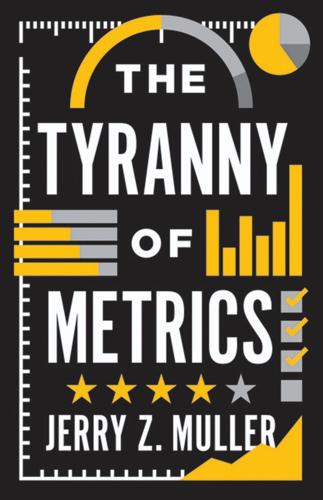
The Tyranny of Metrics
by
Jerry Z. Muller
Published 23 Jan 2018
Also valuable is Adrian Perry, “Performance Indicators: ‘Measure for Measure’ or ‘A Comedy of Errors’?” in Caroline Mager, Peter Robinson, et al. (eds.), The New Learning Market (London, 2000). 5. Laura Landro, “The Secret to Fighting Infections: Dr. Peter Pronovost Says It Isn’t That Hard. If Only Hospitals Would Do It,” Wall Street Journal, March 28, 2011, and Atul Gawande, The Checklist Manifesto (New York, 2009). 6. Michael Lewis, Moneyball: The Art of Winning an Unfair Game (New York, 2003). 7. Chris Lorenz, “If You’re So Smart, Why Are You under Surveillance? Universities, Neoliberalism, and New Public Management,” Critical Inquiry (Spring 2012), pp. 599–29, esp. pp. 610–11. 8.
…
Mullen, “Teachers Should be Seen and Not Heard,” Education Week, January 7, 2010, http://blogs.edweek.org/teachers/teacher_of_the_year/2010/01/teachers_should_be_seen_and_no.html. CHAPTER 9. MEDICINE 1. Sean P. Keehan et al., “National Health Expenditure Projections, 2015–2025: Economy, Prices, and Aging Expected to Shape Spending and Enrollment,” Health Affairs 35, no. 8 (August 2016), pp. 1–10; Atul Gawande, “The Checklist,” New Yorker, December 10, 2007. 2. World Health Report 2000, Health Systems: Improving Performance, quoted in Scott Atlas, In Excellent Health: Setting the Record Straight on America’s Health Care (Stanford, Calif., 2011). 3. Atlas, In Excellent Health. 4. Ibid., pp. 28–30, 99–105. 5.

Futureproof: 9 Rules for Humans in the Age of Automation
by
Kevin Roose
Published 9 Mar 2021
Many endpoint jobs exist in the industries you’d expect—service, retail, transportation. But they are also cropping up in more prestigious white-collar professions, where AI is turning what used to be machine-assisted work into machine-managed work. In a 2018 New Yorker piece, “Why Doctors Hate Their Computers,” Atul Gawande wrote that electronic medical software, which has become ubiquitous in U.S. hospitals over the last decade, was contributing to rising rates of burnout and depression among doctors by drowning them in record-keeping tasks and diverting them from patient interactions. That sentiment was echoed by Emily Silverman, a physician in San Francisco, who wrote in a 2019 Times op-ed that the electronic health records system used by her hospital had turned her and her colleagues into stressed-out machine minders.
…
The product was a voice-based AI assistant called Duplex Chris Welch, “Google Just Gave a Stunning Demo of Assistant Making an Actual Phone Call,” The Verge, May 8, 2018. “Google Duplex is the most incredible” Tweet by @chrismessina, May 8, 2018. As the journalist Martin Ford writes Martin Ford, Rise of the Robots: Technology and the Threat of Mass Unemployment (London: OneWorld Publications, 2015). a 2018 New Yorker piece Atul Gawande, “Why Doctors Hate Their Computers,” The New Yorker, November 12, 2018. Emily Silverman, a physician in San Francisco Emily Silverman, “Our Hospital’s New Software Frets About My ‘Deficiencies,’ ” New York Times, November 1, 2019. When implemented properly Catherine M. DesRoches et al., “Electronic Health Records in Ambulatory Care—A National Survey of Physicians,” New England Journal of Medicine (2008).
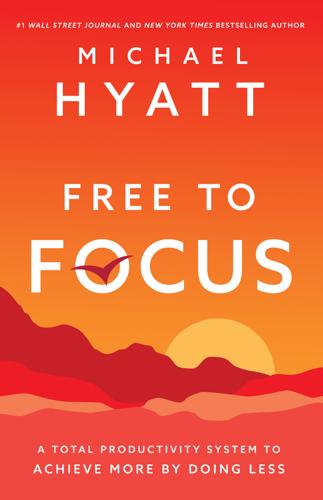
Free to Focus: A Total Productivity System to Achieve More by Doing Less
by
Michael Hyatt
Published 8 Apr 2019
It might be more accurate to say they prevent mistakes, because designing rituals allows you to anticipate different points of possible failure and build in safety nets for each step in the process. Even if you hit a snag early on, you can simply build the solution into your ritual, making the rituals self-correcting over time. Surgeon and medical writer Atul Gawande has highlighted the power of rituals codified in checklists to eliminate error across several industries. He extols the “virtues of regimentation.”3 In his own field, medicine, checklists save thousands of lives and hundreds of millions of dollars every year. Four Foundational Rituals. You can build a ritual around any repetitive task in your life.
…
William Ury, The Power of a Positive No (New York: Bantam, 2007), 10–15. 4. Ury, Positive No, 14. 5. Ury, Positive No, 16–18. Chapter 5 Automate 1. “Ritual,” Dictionary.com, http://www.dictionary.com/browse/ritual. 2. Mason Currey, Daily Rituals (New York: Knopf, 2015), xiv. Also see Pang’s discussion of morning routines in Rest, 75–92. 3. Atul Gawande, “The Checklist,” New Yorker, December 10, 2007, https://www.newyorker.com/magazine/2007/12/10/the-checklist. See also Gawande’s book, The Checklist Manifesto (New York: Metropolitan Books, 2009). Chapter 6 Delegate 1. Ashley V. Whillans et al., “Buying Time Promotes Happiness,” PNAS, August 8, 2017, http://www.pnas.org/content/114/32/8523. 2.
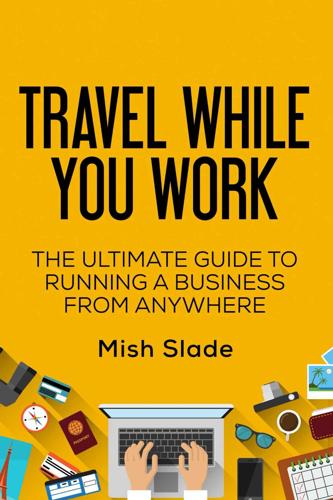
Travel While You Work: The Ultimate Guide to Running a Business From Anywhere
by
Mish Slade
Published 13 Aug 2015
Resources to help with your routine Here's a selection of books, websites and tools that might inspire you to develop your own routine and good working habits: The Tiny Habits Method (website and free course): www.worktravel.co/tinyhabits Coach Me (app that helps you reach your goals): www.worktravel.co/coach Mini Habits: Smaller Habits, Bigger Results (book by Stephen Guise): www.worktravel.co/minihabits The Checklist Manifesto: How to Get Things Right (book by Atul Gawande): www.worktravel.co/checklist There are some fantastic answers on Quora to the question "What are the best daily routines of highly productive people?": www.worktravel.co/quora The Quora answers to the question "What are the best ways for non 9-5 types to build structure and social interaction into their daily routines?"
…
Calculate your cost of living The Birdy: www.worktravel.co/birdy Numbeo's cost-of-living tool: www.worktravel.co/numbeo Trail Wallet: www.worktravel.co/trailwallet Taxes Greenback Expat Tax Services: www.worktravel.co/greenback Small Business Bodyguard: www.worktravel.co/bodyguard Flag Theory: www.worktravel.co/flag Foreign Earned Income Exclusion (US residents only): www.worktravel.co/irs CHAPER 3: GUARD YOUR DATA Protect Your Tech (book): www.worktravel.co/protectyourtech HTTP Everywhere: www.worktravel.co/httpseverywhere Torguard VPN: www.worktravel.co/torguard LastPass (password management): www.worktravel.co/lastpass CHAPTER 4: BE A PRODUCTIVITY POWERHOUSE Have a routine The Tiny Habits Method (website and free course): www.worktravel.co/tinyhabits Coach Me (app that helps you reach your goals): www.worktravel.co/coach Mini Habits: Smaller Habits, Bigger Results (book by Stephen Guise): www.worktravel.co/minihabits The Checklist Manifesto: How to Get Things Right (book by Atul Gawande): www.worktravel.co/checklist Quora Q&A – "What are the best daily routines of highly productive people?": www.worktravel.co/quora Quora Q&A – "What are the best ways for non 9-5 types to build structure and social interaction into their daily routines?": www.worktravel.co/quora2 Stay focused and filter out distractions Unroll Me (unsubscribe from emails): www.worktravel.co/unroll Gmail "plus sign" trick: www.worktravel.co/plustrick Trello: www.worktravel.co/trello Pomodoro Technique: www.worktravel.co/pomodoro Pomodoto (Pomodoro timer): www.worktravel.co/pomodoto You Can Book Me (appointment-booking software): www.worktravel.co/bookme iDoneThis (track what you've achieved): www.worktravel.co/donethis AskMeEvery (track what you've achieved): www.worktravel.co/askme Kransen headphones: www.worktravel.co/kransen ShareDesk (coworking spaces): www.worktravel.co/sharedesk Coffitivity (concentration app): www.worktravel.co/coffitivity Focus@Will (concentration app): www.worktravel.co/focus Optimise your workspace Roost laptop stand: www.worktravel.co/roost Portable keyboards: www.worktravel.co/keyboard Mini-mouse: www.worktravel.co/mouse ZestDesk (standing desk): www.worktravel.co/zestdesk StandStand (standing desk): www.worktravel.co/standstand Kinivo ZX100 laptop speakers: www.worktravel.co/zx100 Deal with wifi issues Wifi speed test: www.worktravel.co/speedtest Huawei E5330 mobile hotspot: www.worktravel.co/hotspot Didlogic (cheap international calls without internet): www.worktravel.co/didlogic Skype To Go: www.worktravel.co/skypetogo Google Docs Offline: www.worktravel.co/docsoffline CHAPTER 5: FREELANCE FROM ANYWHERE Emailing Boomerang (to delay when an email gets sent): www.worktravel.co/boomerang Scheduling World Time Buddy: www.worktravel.co/worldtimebuddy Doodle: www.worktravel.co/doodle Mixmax: www.worktravel.co/mixmax You Can Book Me: www.worktravel.co/bookme Phone/video calls Buy a Skype Number: www.worktravel.co/skypenumber Zoom (alternative to Skype): www.worktravel.co/zoom GoToMeeting (alternative to Skype): www.worktravel.co/gotomeeting Join Me (alternative to Skype): www.worktravel.co/joinme Didlogic (cheap international calls without internet): www.worktravel.co/didlogic Skype To Go: www.worktravel.co/skypetogo Screen sharing Screenleap: www.worktravel.co/screenleap Document signing HelloSign: www.worktravel.co/hellosign EchoSign: www.worktravel.co/echosign Getting paid PayPal: www.worktravel.co/paypal Stripe: www.worktravel.co/stripe Freshbooks (for information about PayPal Business Payments): www.worktravel.co/freshbooks Harvest (for information about PayPal Business Payments): www.worktravel.co/harvest TransferWise (cross-currency payments): www.worktravel.co/transferwise CHAPTER 6: HIRE LIKE A CHAMP Hire remote contractors Upwork (formerly Elance/oDesk): www.worktravel.co/upwork Guru: www.worktravel.co/guru Freelancer: www.worktravel.co/freelancer Gigster: www.worktravel.co/gigster 99 Designs: www.worktravel.co/99designs Crowdspring: www.worktravel.co/crowdspring Fancy Hands: www.worktravel.co/fancyhands Information about "milestones": www.worktravel.co/milestones Screencast-o-matic (record screencasts): www.worktravel.co/screencast Hire permanent employees Working Mums (UK): www.worktravel.co/workingmums Hire My Mom (US): www.worktravel.co/hiremymom Remotive: www.worktravel.co/remotive Remote OK: www.worktravel.co/remoteok WFH.io: www.worktravel.co/wfh We Work Remotely: www.worktravel.co/wework Authentic Jobs: www.worktravel.co/authentic Upwork: www.worktravel.co/upwork Information about KPIs: www.worktravel.co/kpi Topgrading (hiring tips and resources): www.worktravel.co/topgrading Buffer's 45-day contract period: www.worktravel.co/bootcamp CHAPTER 7: RUN THE BEST BIZ Team chat software Slack: www.worktravel.co/slack HipChat: www.worktravel.co/hipchat Structured meetings and ad-hoc calls Mastering The Rockefeller Habits (book): www.worktravel.co/rockefeller World Time Buddy: www.worktravel.co/worldtimebuddy Google Calendar: www.worktravel.co/calendar Zoom (alternative to Skype): www.worktravel.co/zoom Appear.in (alternative to Skype): www.worktravel.co/appear Screen sharing Screenleap: www.worktravel.co/screenleap Giving tutorials and training Screencast-o-matic: www.worktravel.co/screencast ScreenFlow (Mac): www.worktravel.co/screenflow Camtasia (Windows): www.worktravel.co/camtasia Procedures Google Drive: www.worktravel.co/drive Process Street: www.worktravel.co/process Project management Trello: www.worktravel.co/trello Basecamp: www.worktravel.co/basecamp Asana: www.worktravel.co/asana Teamwork: www.worktravel.co/teamwork Wikipedia's "Comparison of project management software" page: www.worktravel.co/pmtools Cloud storage Dropbox: www.worktravel.co/dropbox OneDrive: www.worktravel.co/onedrive Google Drive: www.worktravel.co/drive Information on Google Drive "offline mode": www.worktravel.co/docsoffline Box: www.worktravel.co/box Amazon Cloud Drive: www.worktravel.co/acd Other useful tools and resources LastPass (password management): www.worktravel.co/lastpass HelloSign (document signing): www.worktravel.co/hellosign EchoSign (document signing): www.worktravel.co/echosign Sqwiggle (video team chat): www.worktravel.co/sqwiggle Zapier (task automation): www.worktravel.co/zapier IFTTT (task automation): www.worktravel.co/ifttt Also by the author… Protect Your Tech: Your geek-free guide to a secure and private digital life If your password for every website is "monkey" or "iloveyou"… you need to read this book.

Different: Escaping the Competitive Herd
by
Youngme Moon
Published 5 Apr 2010
This is what Feynman did: He wove his subject into the broader tapestry of everyday life. He added richness, texture, context. He was a man I wish I could have invited to dinner. There are other examples of this, of scholars who have written books that have influenced my own approach to writing. The physician Atul Gawande has produced two books (Complications and Better) about medicine and the health care system in this country. Gawande’s books are a complicated brew—they touch on the professional and the personal, they are alternately dispassionate and impassioned, and together they transformed the way I thought about medicine.
…
I wanted to write this book because I believe that there wil always be a muddied herd in business—in every category, in every industry, an indistinguishable cluster of brands moving in lockstep with one another—but at the same time I believe there wil always be exceptions, too. The writer-physician Atul Gawande has written about the phenomenon of “positive deviants” in the medical profession, that smal set of players who are mired in the same environmental conditions as everyone else but stubbornly refuse to al ow themselves to be constrained by conventional wisdoms, and as a consequence are able to identify fresh and often counter-traditional ways to address seemingly intractable problems.
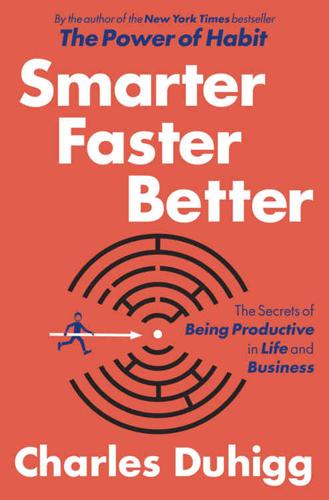
Smarter Faster Better: The Secrets of Being Productive in Life and Business
by
Charles Duhigg
Published 8 Mar 2016
My life felt like a treadmill of to-do lists, emails requiring immediate replies, rushed meetings, and subsequent apologies for being late. Amid all this hustle and scurry—and under the guise of asking for a little publishing advice—I sent a note to an author I admired, a friend of one of my colleagues at the Times. The author’s name was Atul Gawande, and he appeared to be a paragon of success. He was a forty-six-year-old staff writer at a prestigious magazine, as well as a renowned surgeon at one of the nation’s top hospitals. He was an associate professor at Harvard, an adviser to the World Health Organization, and the founder of a nonprofit that sent surgical supplies to medically underserved parts of the world.
…
Productivity, put simply, is the name we give our attempts to figure out the best uses of our energy, intellect, and time as we try to seize the most meaningful rewards with the least wasted effort. It’s a process of learning how to succeed with less stress and struggle. It’s about getting things done without sacrificing everything we care about along the way. By this definition, Atul Gawande seemed to have things pretty well figured out. A few days later, he responded to my email with his regrets. “I wish I could help,” he wrote, “but I’m running flat out with my various commitments.” Even he, it seemed, had limits. “I hope you’ll understand.” Later that week, I mentioned this exchange to our mutual friend.
…
There was one last thing, the principal told him. No one was allowed to finish elementary school without doing a final bit of work. Dante had to transform this diploma and make it his own. She handed Dante a pen. He filled in the space with his name. APPENDIX A Reader’s Guide to Using These Ideas A few months after I reached out to Atul Gawande—the author and physician from the introduction who helped spark my interest in the science of productivity—I began reporting this book. For almost two years, I conducted interviews with experts, read piles of scientific papers, and tracked down case studies. At some point, I began to imagine that I had become something of a productivity expert myself.
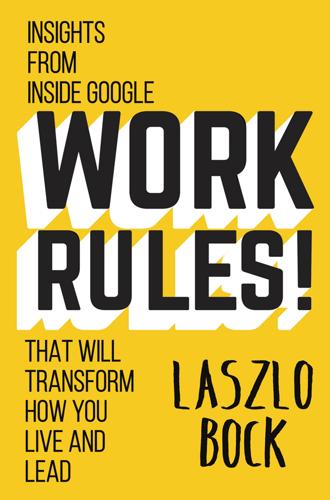
Work Rules!: Insights From Inside Google That Will Transform How You Live and Lead
by
Laszlo Bock
Published 31 Mar 2015
Make no mistake, it is essential. An engineering manager who can’t code is not going to be able to lead a team at Google. But of the behaviors that differentiated the very best, technical input made the smallest difference to teams. In addition to being specific, we had to make good management automatic. Atul Gawande has written persuasively in The New Yorker and in his book The Checklist Manifesto about the power of checklists. I first encountered his writing in the 2009 article “The Checklist,”139 where he described the test flight of the Model 299, a next-generation long-range bomber developed by the Boeing Corporation in 1935.
…
Nooglers whose managers took action on this email became fully effective 25 percent faster than their peers, saving a full month of learning time. I was shocked at how profound the result was. How was it possible that a single email could have such a big effect? It turns out checklists really do work, even when the list is almost patronizingly simple. We’re human, and we sometimes forget the most basic things. Atul Gawande, whom we last saw in chapter 8, developed a surgical safety checklist that starts with “Patient has confirmed identity, site [i.e., where on the body the surgery is to take place], procedure, and consent.”219 The entire checklist has nineteen items. In 2007 and 2008, one hospital in each of eight countrieslxii tried the checklist on a total of 7,728 patients.
…
Garvin, Alison Berkley Wagonfeld, and Liz Kind, “Google’s Project Oxygen: Do Managers Matter?” Harvard Business School Case 313-110, April 2013 (revised July 2013). 138. We wouldn’t see anything like this again until 2008, when Bill Coughran, our SVP of Research and Systems Infrastructure until 2011, amassed 180 direct reports. 139. Atul Gawande, “The Checklist,” The New Yorker, December 10, 2007, http://www.newyorker.com/reporting/2007/12/10/071210fa_fact_gawande. 140. From internal interviews. 141. ASTD Staff, “$156 Billion Spent on Training and Development,” ASTD (blog), American Society for Training and Development (now the Association for Talent Development), December 6, 2012, http://www.astd.org/Publications/Blogs/ASTD-Blog/2012/12/156-Billion-Spent-on-Training-and-Development. 142.
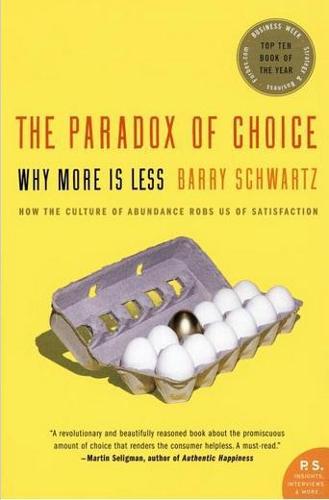
The Paradox of Choice: Why More Is Less
by
Barry Schwartz
Published 1 Jan 2004
The tenor of medical practice has shifted from one in which the all-knowing, paternalistic doctor tells the patient what must be done—or just does it—to one in which the doctor arrays the possibilities before the patient, along with the likely plusses and minuses of each, and the patient makes a choice. The attitude was well described by physician and New Yorker contributor Atul Gawande: Only a decade ago, doctors made the decisions; patients did what they were told. Doctors did not consult patients about their desires and priorities, and routinely withheld information—sometimes crucial information, such as what drugs they were on, what treatments they were being given, and what their diagnosis was.
…
“defined contribution” pension plans depression attributional style and epidemic of individualism and learned helplessness and maximizing and social cost of symptoms of deregulation, of utilities Development as Freedom (Sen) diets diminishing marginal utility, law of discounts vs. surcharges divorce domain specificity “dress down” wardrobe durable goods E eating disorders Eckersley, Richard education, positional competition and egocentrism Ehrenreich, Barbara elections, U.S., of 2000, 26 electricity service electronic gadgets employment at home mobility in wardrobe and endowment effect Epstein, Benita error, susceptibility to evolution existential choice exit Exit, Voice, and Loyalty (Hirschman) expectations: control of high raised rising see also prospect theory expected utility experience, diversity of experienced utility expressive value, of choice F family “fear of falling,” feelings, memories and predictions of framing comparison and definition of prospect theory and psychological accounting and reference prices and risk assessment and France Frank, Robert freedom “freedom from” and “freedom to,” self-respect and, see also autonomy friendship G gains, see risk, risk assessment Gallup polls Gawande, Atul Gawande, Hunter Germany goal-setting God, belief in “good enough,” see satisficers Gore, Al gratitude Great Britain grocery shopping gross domestic product guarantees, money-back H habits happiness autonomy and choice and decline in maximizing as obstacle to measurements and surveys of social comparison and social relations and status and wealth and see also satisfaction Harris, Lou Harvard University health care health insurance heart disease hedonic adaptation hedonic lag helplessness, learned heuristic, definition of high expectations, curse of Hirsch, Fred Hirschman, Albert HMOs human progress Hungary hypertension I Iceland identity, choice of illness immune system inaction inertia income per capita individualism infants “infomercial,” information: evaluations of filtered by consciousness gathering of quality and quantity of information costs instrumental value, of choice Internet medical misinformation on interviews, effect of J jams, of choice Japan jeans, selection of job mobility Johnson, Paul Joyless Economy, The (Scitovsky) justification, of choices K Kahneman, Daniel Kaiser Permanente Kaminer, Wendy Katz, Jay L Landman, Janet Lane, Robert learned helplessness liberty, negative vs. positive liking, wanting and loss aversion Loss of Happiness in Market Democracies, The (Lane) losses.

Reinventing Capitalism in the Age of Big Data
by
Viktor Mayer-Schönberger
and
Thomas Ramge
Published 27 Feb 2018
A popular information-processing tool, the checklist—which is essentially a simplified version of the SOP—provides similar decision-making benefits. Checklists in aircraft have been shown to significantly reduce pilot error, particularly in high-stress situations. And Harvard Medical School professor Atul Gawande has demonstrated that using a checklist in a hospital intensive care unit drastically lowers infection rates among patients. Checking all the boxes may be tedious, but it makes for better decisions. Checklists and SOPs work well in routine situations—those that have largely been anticipated in advance—and when the outcomes are the same, or nearly so, each time.
…
Rosenfield, Linnea Gandhi, and Tom Blaser, “Noise: How to Overcome the High, Hidden Cost of Inconsistent Decision Making,” Harvard Business Review (October 2016), https://hbr.org/2016/10/noise. Checklists in aircraft: Brigette M. Hales and Peter J. Pronovost, “The Checklist—a Tool for Error Management and Performance,” Journal of Critical Care 21 (2006), 231–235. checklist in a hospital intensive care unit: Atul Gawande, The Checklist Manifesto: How to Get Things Right (New York: Metropolitan Books, 2009). Gawande was inspired to test the checklist approach after reading about a pilot study conducted by Peter Pronovost of the Johns Hopkins University School of Medicine. balancing centralized and delegated decision: Yingyi Qian, Gérard Roland, and Chenggang Xu, “Coordinating Changes in M-Form and U-Form Organizations,” paper presented to the Nobel Symposium, April 1998, https://papers.ssrn.com/sol3/papers.cfm?
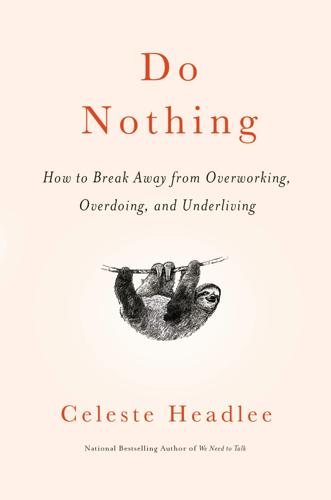
Do Nothing: How to Break Away From Overworking, Overdoing, and Underliving
by
Celeste Headlee
Published 10 Mar 2020
It turns out, the couples who admitted there was hostility in their marriages took nearly twice as long to heal as those with supportive partners. In other words, being part of a healthy marriage or partnership can help your body heal. This phenomenon has been noted in many studies from all over the globe. Social contact (provided it’s not hostile) can reduce pain and strengthen the immune system. The surgeon and author Atul Gawande says, “Without sustained social interaction, the human brain may become as impaired as one that has incurred a traumatic head injury.” That sounds like a fundamental need to me. Belonging to a social group has helped our species almost from the first appearance of Homo sapiens on the planet. Not only does it keep us safer and allow us to collaborate in order to take down much larger animals, like buffalo and lions, but it also seems to have made us smarter.
…
Leary, “The Need to Belong: Desire for Interpersonal Attachments as a Fundamental Human Motivation,” Psychological Bulletin, May 1995. “Belongingness needs do not emerge”: Ibid. Forty-two married couples: Janice K. Kiecole-Glaser et al., “Hostile Marital Interactions, Proinflammatory Cytokine Production, and Wound Healing,” Archives of General Psychiatry, December 2005. “Without sustained social interaction”: Atul Gawande, “Hellhole,” The New Yorker, March 23, 2009. “The empathy of our closest evolutionary”: Frans de Waal, “Does Evolution Explain Human Nature?” John Templeton Foundation, April 2010, templeton.org/evolution/Essays/deWaal.pdf. declines in empathy have been recorded: Paula Nunes et al., “A Study of Empathy Decline in Students from Five Health Disciplines During Their First Year of Training,” International Journal of Medical Education, February 1, 2011.
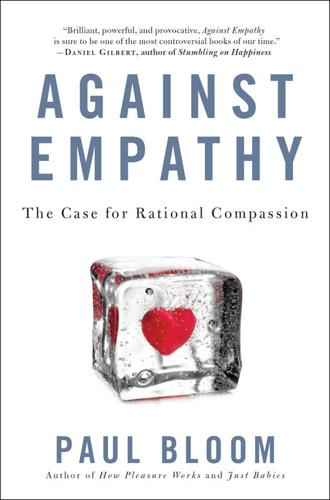
Against Empathy: The Case for Rational Compassion
by
Paul Bloom
I find it exhausting to spend even a short time with someone who is depressed or anxious. But my friend finds it exhilarating. She is engaged by her clients’ problems, interested in the challenges that arise, and excited by the possibility of improving their lives. Her description reminded me of a discussion by the writer and surgeon Atul Gawande about the attitudes of “tenderness and aestheticism” that good surgeons feel toward their patients, treating them with respect but seeing them also as problems that need to be solved. Freud himself made a similar analogy: “I cannot advise my colleagues too urgently to model themselves during psycho-analytic treatment on the surgeon, who puts aside all his feelings, even his human sympathy, and concentrates his mental forces on the single aim of performing the operations as skillfully as possible.”
…
“essential learning objective” Christine Montross, “Forum: Against Empathy,” Boston Review, August 2014, https://bostonreview.net/forum/against-empathy/christine-montross-response-against-empathy-montross. “If, while listening” Ibid. 144 nursing students . . . especially prone Martin L. Hoffman, Empathy and Moral Development: Implications for Caring and Justice (New York: Cambridge University Press, 2001). 145 “tenderness and aestheticism” Atul Gawande, “Final Cut. Medical Arrogance and the Decline of the Autopsy,” The New Yorker 77 (2001): 94–99. “I cannot advise” Peter Kramer, Freud: Inventor of the Modern Mind (New York: HarperCollins, 2006), 26. 146 “I didn’t need him to be” Leslie Jamison, The Empathy Exams: Essays (New York: Macmillan, 2014), 17.

The Glass Cage: Automation and Us
by
Nicholas Carr
Published 28 Sep 2014
The key is to strike the right balance between grasping the specifics of the patient’s situation and inferring general patterns and probabilities derived from reading and experience. Checklists and other decision guides can serve as valuable aids in this process. They bring order to complicated and sometimes chaotic circumstances. But as the surgeon and New Yorker writer Atul Gawande explained in his book The Checklist Manifesto, the “virtues of regimentation” don’t negate the need for “courage, wits, and improvisation.” The best clinicians will always be distinguished by their “expert audacity.”24 By requiring a doctor to follow templates and prompts too slavishly, computer automation can skew the dynamics of doctor-patient relations.
…
Greenberg, “Too Many Alerts, Too Much Liability: Sorting through the Malpractice Implications of Drug-Drug Interaction Clinical Decision Support,” Saint Louis University Journal of Health Law and Policy 5 (2012): 257–295; and David W. Bates, “Clinical Decision Support and the Law: The Big Picture,” Saint Louis University Journal of Health Law and Policy 5 (2012): 319–324. 24.Atul Gawande, The Checklist Manifesto: How to Get Things Right (New York: Henry Holt, 2010), 161–162. 25.Lown and Rodriguez, “Lost in Translation?” 26.Jerome Groopman, How Doctors Think (New York: Houghton Mifflin, 2007), 34–35. 27.Adam Smith, The Wealth of Nations (New York: Modern Library, 2000), 840. 28.Ibid., 4. 29.Frederick Winslow Taylor, The Principles of Scientific Management (New York: Harper & Brothers, 1913), 11. 30.Ibid., 36. 31.Hannah Arendt, The Human Condition (Chicago: University of Chicago Press, 1998), 147. 32.Harry Braverman, Labor and Monopoly Capital: The Degradation of Work in the Twentieth Century (New York: Monthly Review Press, 1998), 307. 33.For a succinct review of the Braverman debate, see Peter Meiksins, “Labor and Monopoly Capital for the 1990s: A Review and Critique of the Labor Process Debate,” Monthly Review, November 1994. 34.James R.

Simple Rules: How to Thrive in a Complex World
by
Donald Sull
and
Kathleen M. Eisenhardt
Published 20 Apr 2015
Army Sergeant Majors Academy Digital Library, Personal Experience Papers, October 5, 2006, http://cgsc.contentdm.oclc.org/cdm/singleitem/collection/p15040coll2/id/635/rec/14. [>] At noon on December: Blog of Sgt. Edward Montoya Jr., a U.S. Army medic who was in the mess hall when the explosion took place. http://gene-afterthemilitary.blogspot.com/2011/12/day-of-hell-on-fob-marez-by-sgt-edward.html. [>] In 2004 the Army: Atul Gawande, “Casualties of War—Military Care for the Wounded from Iraq and Afghanistan,” New England Journal of Medicine 351 (2004): 2471–75. [>] Only one out of every ten: Ibid. [>] After the first: M. M. Manring et al., “Treatment of War Wounds: A Historic Review,” Clinical Orthopaedics and Related Research 467, no. 8 (2004): 2168–91. [>] Simple guidelines: There are no universally accepted standards for use in emergency triage, but common criteria include systolic blood pressure, pulse rate, respiration, ability to respond to commands, and the motor component of the Glasgow Coma Scale.
…
. [>] A decade after the order’s: Ibid., 82. [>] Both flexibility and consistency: Jason P. Davis, Kathleen M. Eisenhardt, and Christopher B. Bingham, “Optimal Structure, Market Dynamism, and the Strategy of Simple Rules,” Administrative Science Quarterly 54, no. 3 (2009): 413–52. [>] Although these errors: Atul Gawande, The Checklist Manifesto: How to Get Things Right (New York: Metropolitan, 2009). [>] The chain’s selling point: McDonald’s has ranked last for seventeen of the last eighteen years in the American Customer Satisfaction Index. American Customer Satisfaction Index, “Benchmarks by Industry: Limited-Service Restaurants,” http://www.theacsi.org/index.php?

The Slow Fix: Solve Problems, Work Smarter, and Live Better in a World Addicted to Speed
by
Carl Honore
Published 29 Jan 2013
Women musicians sounded better behind screens: Claudia Goldin and Cecilia Rouse, “Orchestrating Impartiality: The Impact of ‘Blind’ Auditions on Female Musicians,” American Economic Review, Volume 90, Number 4 (September 2000), pp. 715–41. Broken window theory and effects of graffiti: Kees Keizer, Siegwart Lindenberg and Linda Steg, “The Spreading of Disorder,” Science 12, Volume 322, Number 5908 (December 2008), pp. 1681–5. John Wooden and basketball socks: Atul Gawande, “Top Athletes and Singers Have Coaches. Should You?” New Yorker, 3 October 2011. Van Halen and the M&Ms: Jacob Ganz, “The Truth about Van Halen and Those Brown M&Ms,” NPR’s The Record (February 2012). Cleared for Takeoff: Based on interview with Dr J. Terrance Davis, the Associate Chief Medical Officer who launched the program at the Nationwide Children’s Hospital.
…
Image of human eyes boosts honesty: Melissa Bateson, Daniel Nettle and Gilbert Roberts, “Cues of being watched enhance cooperation in a real-world setting,” Biology Letters, Volume 2 (2006), pp. 412–14. Band of brothers: William Darryl Henderson, Cohesion: The Human Element in Combat (Washington, DC: National Defense University Press, 1985), pp. 22–3. Sir Richard Branson on great delivery: From column in Entrepreneur, 20 April 2011. Knowing names helps teams: Atul Gawande, The Checklist Manifesto: How to Get Things Right (London: Profile, 2010), p. 108. Happy staff more creative: Bill Breen, “The 6 Myths of Creativity,” Fast Company, 19 December 2007. Chapter 13 – Play: Solving Problems One Game at a Time Spanish housework study: Salomí Goñi-Legaz, Andrea Ollo-López and Alberto Bayo-Moriones, “The Division of Household Labour in Spanish Dual Earner Couples: Testing Three Theories,” Sex Roles, Volume 63, Numbers 7–8 (2010), pp. 515–29.
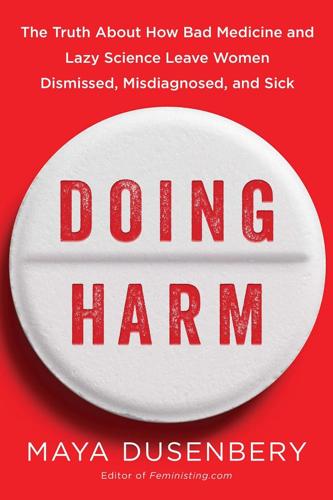
Doing Harm: The Truth About How Bad Medicine and Lazy Science Leave Women Dismissed, Misdiagnosed, and Sick
by
Maya Dusenbery
Published 6 Mar 2018
Nakazawa, The Autoimmune Epidemic, 24. In a recent survey the AARDA conducted of more than 7,800 . . . American Autoimmune Related Diseases Association, Highlights from “The State of Autoimmune Disease.” “utterly failed” to help . . . Atul Gawande, “Letting Go,” The New Yorker, August 2, 2010, www.newyorker.com/magazine/2010/08/02/letting-go-2. “Chronic illness has become . . . Atul Gawande, “The Heroism of Incremental Care,” The New Yorker, January 23, 2017, www.newyorker.com/magazine/2017/01/23/the-heroism-of-incremental-care. Despite doing “a million dollars’ worth of tests . . . Daniela J. Lamas, “When the Brain Is Under Attack,” The Boston Globe, May 27, 2013, www.bostonglobe.com/lifestyle/health-wellness/2013/05/26/when-brain-attacks-newly-discovered-disease-can-mimic-psychosis/dyixxnwdHJJIUITsNYJC3O/story.html.
…
This is reflected in everything from which diseases attract the most research funds to which specialties see the biggest paychecks and prestige. In recent years, there have been some important critiques leveled against medicine’s focus on mortality over morbidity, on preventing death over improving health. The surgeon and writer Dr. Atul Gawande, for example, has argued that, when it comes to end-of-life care, a medical system that tends to favor marginally prolonging life, even at the cost of destroying the quality of that life, has “utterly failed” to help “dying patients achieve what’s most important to them at the end of their lives.”
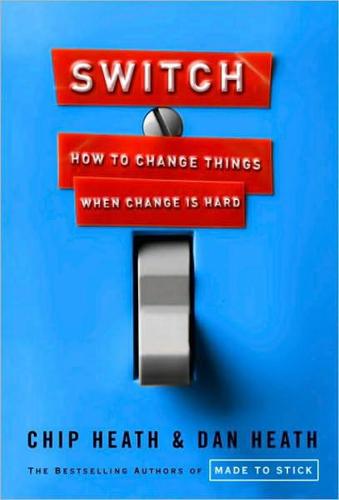
Switch: How to Change Things When Change Is Hard
by
Chip Heath
and
Dan Heath
Published 10 Feb 2010
“Use a checklist,” we admit, sounds like advice a dad would give a college student, along with some tips on tire-pressure gauges and not charging beer to his Exxon card. But bear with us, because your perceptions are about to change. What if we asserted that checklists can be game-changing, that checklists can save lives? The Holy Grail of checklists may be one reported by Atul Gawande in The New Yorker. Patients in intensive care units (ICUs) often have intravenous lines put in to deliver medication. If those lines become infected, nasty health complications can result. Frustrated by these “line infections,” which are preventable, Dr. Peter Pronovost of Johns Hopkins compiled a five-part checklist.
…
Natalie Elder. Dan Heath interviewed Natalie Elder in August 2008. The humble checklist. Parts of the section on checklists originally appeared in our Fast Company column (March 2008), “The Heroic Checklist,” http://www.fastcompany.com/magazine/123/heroic-checklist.html. Holy Grail of checklists. See Atul Gawande (December 10, 2007), “The Checklist: If Something So Simple Can Transform Intensive Care, What Else Can It Do?” New Yorker, pp. 86–101. Checklists educate people about what’s best. We’re not advocating the kind of checklists that are associated with some quality improvement processes—for example, the elaborate procedure manuals compiled for ISO 9000 certification.
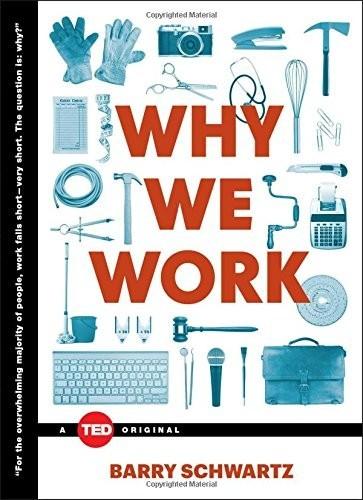
Why We Work
by
Barry Schwartz
Published 31 Aug 2015
We just want to make sure that what they have to do to make a living doesn’t interfere with what it takes to be a good doctor. I don’t want to suggest that offering financial incentives to doctors to withhold services will induce all doctors to do less than they should. But it doesn’t have to affect all doctors. As Atul Gawande documented in a New Yorker article a few years ago, what doctors do is very much influenced by what are the customary practices in their local communities. Some prestigious hospital sets a standard for the proportion of children born by cesarean delivery, or the proportion of joint injuries diagnosed by expensive MRIs instead of less expensive X-rays, and other institutions follow suit.

Uncontrolled Spread: Why COVID-19 Crushed Us and How We Can Defeat the Next Pandemic
by
Scott Gottlieb
Published 20 Sep 2021
It needs also to serve as a clearinghouse to maximize the use of the available testing platforms and to make sure samples are routed to the labs that have available capacity so that more of the nation’s testing capacity is brought into the fold. Writing in The New Yorker in the fall of 2020, the physician and author Dr. Atul Gawande compared the general concept to load balancing among power utilities: “Decades ago, electric companies were organized in the same way that laboratory testing is organized today. They were vertical monopolies that ran their own power plants, transmission lines, and customer operations. That arrangement got the job done, but it meant that many communities endured brownouts and blackouts from a shortage of capacity, while others had an oversupply. . . .
…
Among many others whose outstanding ideas, reporting, and commentary shaped and informed my own writing, and whose work is sometimes quoted in these pages, are: Yasmeen Abutaleb, Amesh Adalja, Lisa Alexander, Kristian Anderson, Stephanie Armour, Drew Armstrong, Frances Arnold, Samira Asma, Jeannie Baumann, Emily Baumgaertner, Guy Benson, Carl Bergstrom, Isaac Bogoch, Alexandre Bolze, Tom Bossert, Zachary Brennan, Robert Califf, Adam Cancryn, Michael Cannon, Tim Carney, Muge Cevik, Caroline Chen, Esther Choo, Nicholas Christakis, Jon Cohen, Jonathan Cohn, Rory Cooper, Michelle Fay Cortez, Stacey Cunningham, Josh Dawsey, Natalie Dean, Dan Diamond, Andrew Dunn, Katherine Eban, Lev Facher, Jeremy Farrar, Jeremy Faust, Phillip Febbo, Nicholas Florko, Tom Frieden, Atul Gawande, Walid Gellad, Julie Gerberding, Gregg Gonsalves, Lawrence Gostin, Celine Gounder, Denise Grady, Nathan Grubaugh, Youyang Gu, Sanjay Gupta, Maggie Haberman, Peggy Hamburg, Chris Hamby, Chris Hayes, Sue Desmond-Hellmann, Matt Herper, Emma Hodcroft, Eddie Holmes, Jared S. Hopkins, Peter Hotez, Thomas Inglesby, Jeneen Interlandi, Akiko Iwasaki, Ashish Jha, Sheila Kaplan, Sarah Karlin-Smith, Dhruv Khullar, Sarah Kliff, Jeremy Konyndyk, Florian Krammer, Josh Kraushaar, Krutika Kuppalli, Adam Kucharski, Kai Kupferschmidt, Martin Landry, Robert Langreth, Michael O.
…
These States Banded Together to Make One.,” Washington Post, August 4, 2020. 40.Scott Gottlieb, “The States Are Laboratories for Covid Control,” Wall Street Journal, November 8, 2020. 41.Asher Klein, “COVID Appears to Be Spiking in Boston-Area Sewage, and It Has Experts Worried,” NBC, October 25, 2020. 42.US Centers for Disease Control and Prevention, “The Laboratory Response Network Partners in Preparedness,” April 10, 2019, https://emergency.cdc.gov/lrn/. 43.US Food and Drug Administration, “FDA, CDC, and CMS Launch Task Force to Help Facilitate Rapid Availability of Diagnostic Tests during Public Health Emergencies,” February 26, 2019, https://www.fda.gov/media/120328/download. 44.Atul Gawande, “We Can Solve the Coronavirus-Test Mess Now—If We Want To,” New Yorker, September 2, 2020. 45.Stephanie Armour, Alexandra Berzon, and James Grimaldi, “Nation’s Top Emergency-Preparedness Agency Focused on Warfare Threats over Pandemic,” Wall Street Journal, July 9, 2020. 46.Sarah Karlin-Smith (@SarahKarlin), “This slide from @BARDA Acting Director Gary Disbrow is a good visual of US prioritizing funding for COVID-19 vaccines versus therapeutics,” Twitter, October 27, 2020, 10:18 a.m.; “NIH to Launch Public-Private Partnership to Speed COVID-19 Vaccine and Treatment Options,” US National Institutes of Health press release, April 17, 2020, https://www.nih.gov/news-events/news-releases/nih-launch-public-private-partnership-speed-covid-19-vaccine-treatment-options; and “Trump Administration Announces Framework and Leadership for ‘Operation Warp Speed,’” US Department of Health and Human Services press release, May 15, 2020, https://www.hhs.gov/about/news/2020/05/15/trump-administration-announces-framework-and-leadership-for-operation-warp-speed.html. 47.Katherine Eban, “How Jared Kushner’s Secret Testing Plan ‘Went Poof into Thin Air,’” Vanity Fair, July 30, 2020. 48.Sheryl Gay Stolberg, “Trump Vows More Coronavirus Testing, but Less Than What May Be Needed,” New York Times, April 27, 2020. 49.Echoes of these concepts would finally emerge as part of a national strategy released by the Biden administration almost a year later, which would create a series of regional testing hubs to coordinate and oversee a sharp expansion of testing in elementary and middle schools and high-risk congregate settings like homeless shelters.
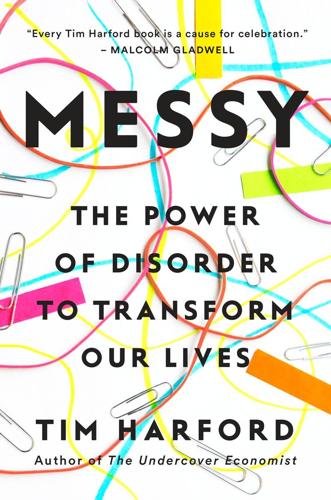
Messy: The Power of Disorder to Transform Our Lives
by
Tim Harford
Published 3 Oct 2016
The score was devised in the early 1950s by Virginia Apgar, an American anesthesiologist, and it’s by no means absurd: it’s quick and convenient, and a baby with a low Apgar score is more likely to suffer problems.3 But because the Apgar score allowed for tidy quantification, it had unintended consequences. As Atul Gawande explains in The New Yorker, the Apgar score “turned an intangible and impressionistic clinical concept—the condition of a newly born baby—into a number that people could collect and compare.” Doctors, a competitive bunch, wanted to improve their scores. Hospital administrators started taking an interest, too.
…
Scott’s Seeing Like a State (New Haven, CT: Yale University Press, 1998) for alerting me to the story of German forestry and to its wider implications. 3. Brian M. Casey, Donald D. McIntire, and Kenneth J. Leveno, “The Continuing Value of the Apgar Score for the Assessment of Newborn Infants,” New England Journal of Medicine 344 (February 15, 2001), pp. 467–471, DOI: 10.1056/NEJM200102153440701. 4. Atul Gawande, “The Score: How Childbirth Went Industrial,” The New Yorker, October 9, 2006, http://www.newyorker.com/magazine/2006/10/09/the-score. 5. David Dranove, Daniel Kessler, Mark McClellan, and Mark Satterthwaite, “Is More Information Better? The Effects of ‘Report Cards’ on Health Care Providers,” Journal of Political Economy 111, no. 3 (2003), pp. 555–588. 6.
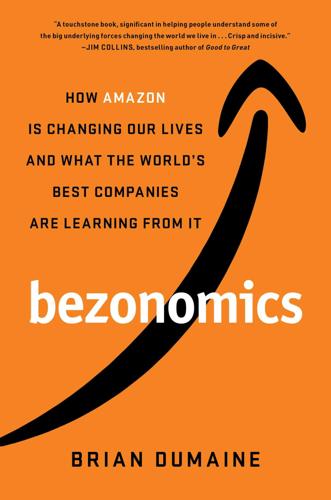
Bezonomics: How Amazon Is Changing Our Lives and What the World's Best Companies Are Learning From It
by
Brian Dumaine
Published 11 May 2020
Take as just one example, health care. In 2018, Amazon partnered with Warren Buffett’s Berkshire Hathaway and JPMorgan Chase to form a nonprofit dedicated to reinventing health care for the 1.2 million employees who work at the three companies. The head of this new initiative is the renowned Boston surgeon and New Yorker writer Atul Gawande. Amazon aims to use this laboratory to find new ways to disrupt the sector. What the health-care industry needs is lower prices and better customer care, and that’s exactly what Amazon does best. In 2018, the company acquired PillPack, an online pharmacy. Amazon could also build pharmacies in its Whole Foods stores, not only offering low prices but also employing its predictive analytics and customer data capabilities to track and influence patient behavior.
…
Around the same time as the 2018 PillPack acquisition, Amazon announced that it would join Berkshire Hathaway—run by legendary investor Warren Buffett—and JPMorgan Chase—run by banking’s highest-profile CEO, Jamie Dimon—to form a nonprofit partnership, later dubbed Haven. The idea is to shake up the broken U.S. health-care system. The organization appointed Atul Gawande as CEO. If anyone has a shot at draining the health-care swamp, it’s Gawande. He’s a surgeon at the prestigious Brigham and Women’s Hospital in Boston and a professor at Harvard Medical School and has written four bestselling books on health care, including Complications, which was a finalist for the National Book Award.
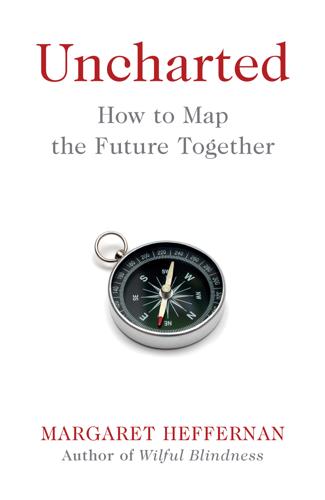
Uncharted: How to Map the Future
by
Margaret Heffernan
Published 20 Feb 2020
They do not see death as a problem. In that, they are unusual. Death is frequently portrayed as a technical challenge or a failure. The education of doctors focuses overwhelmingly on improving and saving lives; in all their medical training, doctors spend roughly just twenty hours with the dying. The physician Atul Gawande has written poignantly about his own well-intended but misguided and excessive attempts to prolong life. He had never spent much time looking at how old people actually live, but when he did, he came to a startlingly simple conclusion: that making their lives better often required reducing purely medical imperatives.
…
A completely brilliant and original book. 4 Source is a conference of doctors held in Chicago in 2018, hosted by Advisory. 5 Stacey Chang, M.S., and Lee, Thomas H., ‘Beyond Evidence-Based Medicine’, New England Journal for Medicine, 22 November 2018 6 This is in striking contrast to medical record systems that are designed without doctors or patients in mind, as described by Atul Gawande: www.newyorker.com/magazine/2018/11/12/why-doctors-hate-their-computers 7 ‘The Citizens’ Assembly Publishes Final Report’, www.citizensassembly.ie/en/News/The-Citizens-Assembly-Publishes-Final-Report.html 5 GO FAST, GO FAR 1 Crime data from Poligono Edison, OXXO (email) 2 ‘Fighting Corruption in Mexico: Taking It to the People’, www.foreignaffairs.com/articles/mexico/2016-06-22/fighting-corruption-mexico, accessed August 2019 Shell scenario-planning videos can be found at: www.youtube.com/watch?

The Unusual Billionaires
by
Saurabh Mukherjea
Published 16 Aug 2016
CHAPTER 10 A Checklist for Long-term Investors ‘An investment operation is one which, upon thorough analysis, promises safety of principal and an adequate return. Operations not meeting these requirements are speculative.’ —Benjamin Graham, The Intelligent Investor (1949) ‘The volume and complexity of what we know has exceeded our individual ability to deliver its benefits correctly, safely, or reliably.’ —Atul Gawande, The Checklist Manifesto: How to Get Things Right (2009) As analysts, my community is trained to comprehensively and objectively analyse a company and provide a recommendation to investors to buy or sell that company’s stock at its current market price. I routinely study annual reports, read interviews of company promoters, and follow news that affects the Indian economy and industries.
…
The distillation of this research and study has thus far focused on the companies that have most often featured in the Coffee Can Portfolios. However, I appreciate that as readers you might not have the same time and resources at your disposal. Hence, to make this book more useful for you (beyond the value of the Coffee Can construct), I have prepared a checklist which is inspired by Atul Gawande, the famous American surgeon, writer and public health researcher. Writing about checklists in his 2007 column28 for the New Yorker, Gawande spoke of how line infections during surgery were so common that they were considered routine. He went on to give an example of a critical-care specialist who made a simple checklist to address just this one problem of line infections.

The Cancer Chronicles: Unlocking Medicine's Deepest Mystery
by
George Johnson
Published 26 Aug 2013
Also see S. Grufferman, “Clustering and Aggregation of Exposures in Hodgkin’s Disease,” Cancer 39 (1977): 1829–33; K. J. Rothman, “A Sobering Start for the Cluster Busters’ Conference,” American Journal of Epidemiology 132, no. 1 suppl. (July 1990): S6–13 [http://www.ncbi.nlm.nih.gov/pubmed/2356837] and Atul Gawande, “The Cancer-Cluster Myth,” New Yorker, February 8, 1999. 62. no harmful exposures from chemical or radioactive contamination: Agency for Toxic Substances and Disease Registry, “Public Health Assessment for Los Alamos National Laboratory,” September 8, 2006, available on the website of the U.S.
…
Rothman, “A Sobering Start for the Cluster Busters’ Conference,” American Journal of Epidemiology 132, no. 1 suppl. (July 1990): S6–13 [http://aje.oxfordjournals.org/content/132/supp1/6.full.pdf+html]; and Raymond Richard Neutra, “Counterpoint from a Cluster Buster,” American Journal of Epidemiology 132, no. 1 (July 1, 1990): 1–8. [http://aje.oxfordjournals.org/content/132/1/1.full.pdf] Also see Atul Gawande, “The Cancer Cluster Myth,” New Yorker, February 8, 1999. For an evocative account of a cancer cluster investigation and the lessons learned, see Dan Fagin, Toms River: A Story of Science, Folly and Redemption (New York: Random House, 2013). 67. even occupational clusters are uncommon: For an assessment see P.
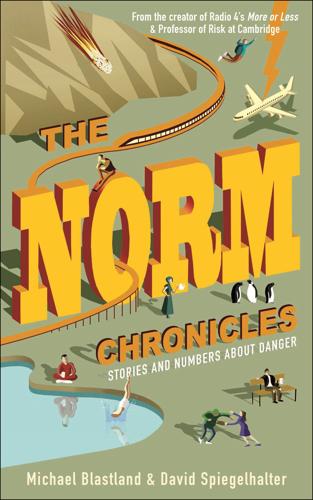
The Norm Chronicles
by
Michael Blastland
Published 14 Oct 2013
All of which hardly puts your mind at ease if you’re about to go under the knife. Some medical dramas have picked up this humility. One in particular – the American comedy Scrubs, which follows a group of all too imperfect new doctors* – was inspired in part by a compelling account of medical error by a surgeon, Atul Gawande, in his book Complications.5 Gawande is fascinated by fallibility. His books burst with medical mistakes, and he readily admits his own, including bodging the insertion of a central line into the main blood vessel to a patient’s heart. In Gawande’s version of the medical narrative, cock-ups, large or small, are routine, even necessary to medical training.
…
A. 190 Minimax regret 56 Minor Planet Center 109, 218 Mitchell and Webb 42 MMR vaccine 68 mobile phones 208 money 268–75 moral panic 39 Morphine 97 mortality at work 197 drowning 55 external causes 15 falls from ladders 9 from asbestos 201 heart disease 9 illegal drugs 103 in childbirth 123 infant 23 maternal 123 maternal in Vienna 125 murder 36 news stories 50 rail international 164 risk and rate 257 roads 168 roads international 169 statistics 4 strangulation 60 mountaineering 176 murder in London 240 risk 35–7 246 N Nanny state 60 nanotechnology 111 narrative see stories NASA, satellite 216 National Lottery as gambling 134 buying all tickets 130 coincidence 77 distribution of numbers 154 winning £100,000 137 National Risk Register 115 National Transportation Safety Board 172 natural hazards 115 natural/unnatural risk 29 Near Earth Object (NEO) 217 New York State hospitals 257 NICE 115 192 Nightingale, Florence 254 nothing/non-events 40–51 Nun, Singing 102 Nutt, David 104 O Oettinger, Gunther 212 old age 271 care costs 274 examples 278 quality of life 283 One Million Random Digits 154 Opium 97 optimism bias 92 over-diagnosis, from screening 263 overweight 190 P parachutes 177 Pascal, Blaise 133, 267 penguins 108 phobia 270 Plane Crash Info 171 plane crashes causes 172 general aviation 173 when occur 172 planning fallacy 92 Plath, Sylvia 121 playground safety 60 poisson distribution 240 possible futures metaphor 290 poverty different households 273 pensioners 272 pregnancy chances 86 teenage 89 with contraception 88 probability and consequence 54, 83, 115, 231, 289 and personal experience 85, 270 and randomness 155 as reasonable betting odds 288 does not exist 5, 288 meaning 10, 287 of dying first 188 prostate cancer 264 Prostate Specific Antigen test (PSA) 264 Public Information films 84 Puerperal fever 124 quantum mechanics 155 Q Quetelet, Adolphe 142, 153, 254 R radiation 204–12 radithor 207 Radon 207 RAF Bomber Command 17 Rail Safety Standards Board 164 Reichelt, Franz 177 relative risk 14, 44 resilience 62 reporting bias 50 retirement 271 rickets 62 risk absolute 14, 44 acute vs chronic 183 aversion 60, 61 and benefit 127 changing perception of 161 communication 117 compensation 192 does not exist independently 286 dread 206 homeostasis 167 images (or pictures) of 83, 171 involuntary 206 perception driven by values 111 perception in sports 180 relative 14, 44 tolerable 202 unacceptable 202 road accidents, children 56 roads 165–70 Roulette 135 Russian Roulette 17, 18 S salience 35, 49 satellites, coming to earth 222 sausages, risk 14 school trips 62 screening 260–67 scuba-diving 178 security airport 262 lie detectors 261 selective samples 85 Semmelweis, Ignaz 124 seriality 76 sex 82–93 sexually transmitted infection (STI) 86 Shipman, Harold 102, 239 Sievert 208 skiing 2 sky-dive 284 risk 144 Slovic, Paul 49, 127, 208, 237 smallpox 66 social control 101 social norms 99 societal concerns 202 space 213–24 space-junk 222 spike, in steering wheel 167 sports, accidents 179 Standardised Hospital-level Mortality Indicator (SHMI) 258 statins 47 still-births 25 stories 4, 65, 266, 195 and coincidence 81 definition of 6 detail in 80, 238 contrasted to non-events 48 in scenario planning 227 crime in the media 236 and truth 239 and patterns 243 medical narrative 251, 261 see also anecdote strangulation, child risk 60 sudden infant deaths 26 Surfers Against Sewage 180 surgery 247–59 Swine flu 71 synchronicity 77 syphilis, rates 83, 90 T tea, as drug 95 teenage pregnancy 89 terrorism 2 lie detectors 261 Thimerosal 71 Thompson, Hunter S. 98, 101, 180 tolerability of risk framework 201 TORINO scale, for asteroid risk 220 total fertility rate 88 trains 160–65 transport 158 accidents 55 trepanation 251 Trier, Lars von 216 trust 167 Tungaska event 216 Tversky, Amos 49 U uncertainty 157, 224, 260, 264 aleatory 151 epistemic 151 unemployment 225–33 V vaccination 63–71 HPV 67 smallpox 67 Value of a Statistical Life (VOSL) 18, 165 variation around average 143 vehicles, number of 168 victim of violent crime, rates 244 Victoria, Queen 121 Vietnam, lottery 131 violence 31–9 crime 244 on railways 162 volcano, Iceland 117 W Wilde, Oscar 96 Willis, Bruce 219 wing-suit 176 Woolf, Virginia 48 World Health Organisation 68, 169, 253 World War II 17 * The story of Anna Bagenholm comes from various sources, including The Lancet1 and Atul Gawande, in his book Better.2 † The usual phrase here is that Anna beat or defied the odds. Strictly speaking, no one can defy the odds. Odds simply describe how many people are expected to be on each side of a possibility. Even a million to one against when you turn out to be the one is not beating the odds: it is the odds
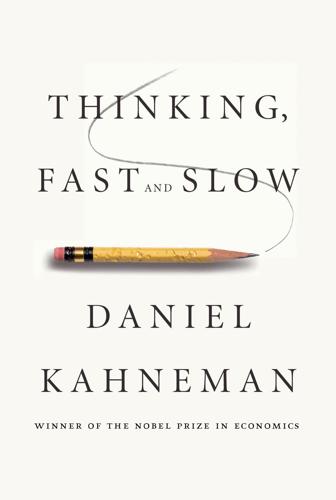
Thinking, Fast and Slow
by
Daniel Kahneman
Published 24 Oct 2011
A baby with a score of 4 or below was probably bluish, flaccid, passive, with a slow or weak pulse—in need of immediate intervention. Applying Apgar’s score, the staff in delivery rooms finally had consistent standards for determining which babies were in trouble, and the formula is credited for an important contribution to reducing infant mortality. The Apgar test is still used every day in every delivery room. Atul Gawande’s recent A Checklist Manifesto provides many other examples of the virtues of checklists and simple rules. The Hostility to Algorithms From the very outset, clinical psychologists responded to Meehl’s ideas with hostility and disbelief. Clearly, they were in the grip of an illusion of skill in terms of their ability to make long-term predictions.
…
Apgar: Virginia Apgar, “A Proposal for a New Method of Evaluation of the Newborn Infant,” Current Researches in Anesthesia and Analgesia 32 (1953): 260–67. Mieczyslaw Finster and Margaret Wood, “The Apgar Score Has Survived the Test of Time,” Anesthesiology 102 (2005): 855–57. virtues of checklists: Atul Gawande, The Checklist Manifesto: How to Get Things Right (New York: Metropolitan Books, 2009). organic fruit: Paul Rozin, “The Meaning of ‘Natural’: Process More Important than Content,” Psychological Science 16 (2005): 652–58. 2 {ce moderated by an arbiter: Mellers, Hertwig, and Kahneman, “Do Frequency Representations Eliminate Conjunction Effects?”
…
accept future addiction: Gary S. Becker and Kevin M. Murphy, “A Theory of Rational Addiction,” Journal of Political Economics 96 (1988): 675–700. Nudge: Richard H. Thaler and Cass R. Sunstein, Nudge: Improving Decisions About Health, Wealth, and Happiness (New Haven: Yale University Press, 2008). can institute and enforce: Atul Gawande, The Checklist Manifesto: How to Get Things Right (New York: Holt, 2009). Daniel Kahneman, Dan Lovallo, and Oliver Sibony, “The Big Idea: Before You Make That Big Decision…” Harvard Business Review 89 (2011): 50–60. distinctive vocabulary: Chip Heath, Richard P. Larrick, and Joshua Klayman, “Cognitive Repairs: How Organizational Practices Can Compensate for Individual Shortcomings,” Research in Organizational Behavior 20 (1998): 1–37.

The Great Mental Models: General Thinking Concepts
by
Shane Parrish
Published 22 Nov 2019
Before people can change they need to know these outside views. We need to go to people we trust, who can give us honest feedback about our traits. These people are in a position to observe us operating within our circles, and are thus able to offer relevant perspectives on our competence. Another option is to hire a coach. Atul Gawande is one of the top surgeons in the United States. And when he wanted to get better at being a surgeon, he hired a coach. This is terribly difficult for anyone, let alone a doctor. At first he felt embarrassed. It had been over a decade since he was evaluated by another person in medical school.

The Power of Habit: Why We Do What We Do in Life and Business
by
Charles Duhigg
Published 1 Jan 2011
Kwaan et al., “Incidence, Patterns, and Prevention of Wrong-Site Surgery,” Archives of Surgery 141, no. 4 (April 2006): 353–57. 6.39 Other hospitals have made similar For a discussion on this topic, see McCarthy and Blumenthal, “Stories from the Sharp End”; Atul Gawande, Better: A Surgeon’s Notes on Performance (New York: Metropolitan Books, 2008); Atul Gawande, The Checklist Manifesto: How to Get Things Right (New York: Metropolitan Books, 2009). 6.40 In the wake of that tragedy NASA, “Report to the President: Actions to Implement the Recommendations of the Presidential Commission on the Space Shuttle Challenger Accident,” July 14, 1986; Matthew W.
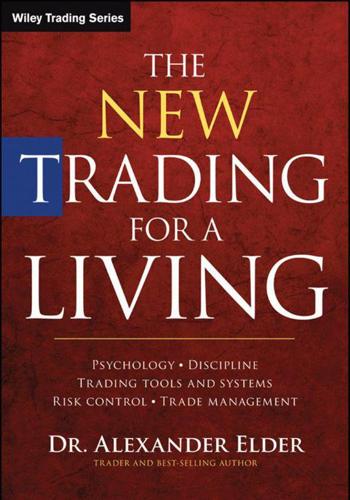
The New Trading for a Living: Psychology, Discipline, Trading Tools and Systems, Risk Control, Trade Management
by
Alexander Elder
Published 28 Sep 2014
Whatever approach you take, the key advantage of any system is that you design it when the markets are closed and you feel calm. A system becomes your anchor of rational behavior amidst the turbulence of the market. It goes without saying that a proper system is written down. This needs to be done because it's easy to forget some essential steps when stressed by live markets. Dr. Atul Gawande in his remarkable book The Checklist Manifesto makes a convincing case for using checklists to raise performance levels in a large variety of demanding endeavors, from surgery and construction to trading. A mechanical trader develops a set of rules, back-tests them on historical data, and then puts his system on autopilot.
…
See also Japanese candlesticks Cash trades, futures compared to Catastrophic stops Ceilings, for commodities CFDs (contracts for difference) CFTC, see Commodity Futures Trading Commission Channels in A-trades Average True Range combining divergences and constructing in day-trading defined and moving averages in setting profit targets symmetrical Channel trading systems constructing channels and mass psychology standard deviation (Bollinger bands) symmetrical trading rules Chaos theory Chart analysis bar charts chaos theory detecting bias in diagonals in Efficient Market theory history of charting and insider trading Japanese candlesticks kangaroo tails “nature's law” Random Walk subjectiveness in support and resistance causes of strength of trading rules and true and false breakouts trends and trading ranges and conflicting timeframes of markets deciding to trade or wait hard right edge identifying and mass psychology as window into mass psychology Charting Commodity Market Price Behavior (L. Dee Belveal) Chart patterns: defined at right edge of charts RSI trendlines subjective interpretation of swings of mass psychology shown in Checklists Checklist Manifesto, The (Atul Gawande) Childhood, mental baggage from Churchill, Winston Classical chart analysis, see Chart analysis “Climax bottoms” Climax indicator Closing prices: Advance/Decline line on candlestick charts of daily and weekly bars of daily charts as most important consensus of value relationship of opening prices and for settlement of trading accounts Cohen, Abraham W.
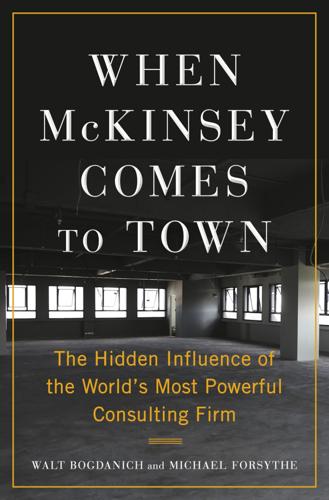
When McKinsey Comes to Town: The Hidden Influence of the World's Most Powerful Consulting Firm
by
Walt Bogdanich
and
Michael Forsythe
Published 3 Oct 2022
* * * — While opioid addiction and fatal overdoses affected wide swaths of society, they fell heaviest on the working poor, struggling to survive in rust-belt cities where factories closed, salaries stagnated, and jobs were outsourced. The epidemic contributed to the further fracturing of the middle class while diminishing the prospects of those aspiring to join it. In a review of the book Deaths of Despair and the Future of Capitalism, Atul Gawande wrote that the authors, two Princeton economists, explored a vexing question: why so many members of the working class without college degrees were dying from drug and alcohol abuse or suicide. The numbers had reached such a level that life expectancy in the United States as a whole dropped three years in a row.
…
GO TO NOTE REFERENCE IN TEXT influential health-care official, Alex Azar: Chris Hamby, Walt Bogdanich, Michael Forsythe, and Jennifer Valentino-DeVries, “McKinsey Opened a Door in Its Firewall Between Pharma Clients and Regulators,” New York Times, April 13, 2022. GO TO NOTE REFERENCE IN TEXT Deaths of Despair: Anne Case and Angus Deaton, Deaths of Despair and the Future of Capitalism (Princeton, N.J.: Princeton University Press, 2020). GO TO NOTE REFERENCE IN TEXT “We all but load the weapons”: Atul Gawande, “The Blight: How Our Economy Has Created an Epidemic of Despair,” New Yorker, March 23, 2020. GO TO NOTE REFERENCE IN TEXT Healey was the first attorney general: Danny Hakim, Roni Caryn Rabin, and William K. Rashbaum, “Lawsuits Lay Bare Sackler Family’s Role in Opioid Crisis,” New York Times, April 1, 2019.
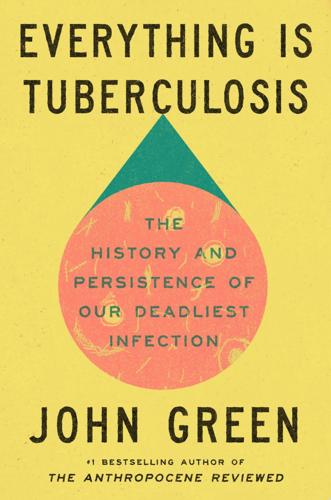
Everything Is Tuberculosis: The History and Persistence of Our Deadliest Infection
by
John Green
Published 18 Mar 2025
At every turn, Carole has generously and patiently educated me about tuberculosis and the systems that underlie it, while encouraging this work. When I first became interested in tuberculosis, Carole and her community introduced me to a host of other experts I’ve been fortunate to learn from—including Jennifer Furin, Christophe Perrin, Salmaan Keshavjee, KJ Seung, Mercedes Becerra, Lucica Ditiu, Atul Gawande, and so many others. Each of these experts and caregivers has welcomed me into their work with enthusiasm and kindness. I am so grateful to the TB survivors I’ve been blessed to meet and learn from, especially Phumeza Tisile and Handaa Enkh-Amgalan. Survivors and civil society groups are the heartbeat of the anti-TB movement, and their courage in standing up for others living with TB despite the stigma attached to the disease inspires me deeply.

Good Prose: The Art of Nonfiction
by
Tracy Kidder
and
Richard Todd
Published 15 Jan 2013
A single flight of planes no bigger than a wedge of geese can quickly end this island fantasy … All dwellers in cities must live with the stubborn fact of annihilation; in New York the fact is somewhat more concentrated because of the concentration of the city itself, and because, of all targets, New York has a certain clear priority. In the mind of whatever perverted dreamer might loose the lightning, New York must hold a steady, irresistible charm. White and Didion may represent extremes, each admirable, in the essayist’s use of the self. Atul Gawande offers an equally admirable example of the use of the professional self. Gawande is a surgeon and professor of medicine at Harvard, and he has published several books of essays on medical subjects. In “The Bell Curve,” he contemplates a simple fact that most doctors find hard to discuss: that some of them are better than others.

The New Division of Labor: How Computers Are Creating the Next Job Market
by
Frank Levy
and
Richard J. Murnane
Published 11 Apr 2004
Other people who helped us by explaining the nature of their work and how computers were affecting it include Tim Guiney, Elliott Mahler, Stephen Saltz, and Jeff Silver. Joan Buchanan provided valuable insight about computers’ effects on healthcare. As our theory was taking shape, we faced the problem of how to tell our story in a way that would be accessible to interested readers. A number of people gave good advice in this regard, including Gene Bardach, Atul Gawande, Chuck Herz, Nick Lemann, Florence Levy, and David Wessell. Special thanks go to Flip Kissam, a professor of law at the University of Kansas, whose broad outlook on life enabled him to dream up the right title for an economists’ book. Still other people read parts or all of draft manuscripts to help correct issues of substance.

The Purpose Economy: How Your Desire for Impact, Personal Growth and Community Is Changing the World
by
Aaron Hurst
Published 31 Aug 2013
Their names are as follows: Cindy Gallop, David Kelley, Marshall Ganz, Jonathan Trent, Erika Karp, Salman Khan, Michelle Long, Laura Roberts, Emily Pilloton, Antje Danielson and Robin Chase, Yvon Chouinard, Daniel Pink, Howard Gardner, Michael Porter, William McDonough, Brené Brown, Ben Nelson, Wendy Kopp, Sasha Orloff and Jacob Rosenberg, Jonathan Abrams, Dr. Eric Topol, Arianna Huffington, Pam O’Connor, Dr. Peter Tuerk, Greg Berman, Marty Makary & Atul Gawande, William Rosenzweig, Carol Cone, Dr. Corey Keyes, Evan Wolfson, Howard Dean, Heather Franzese, Jeff Denby, Jonathan Rapping, Mary Bonauto, Beth Noveck, Rick Warren, R. Seth Williams, Sebastian Thrun and Peter Norvig, Chad Dickerson and Matt Stinchcomb, Daniel Rosen, Billy Parish, Steve Richmond, Joshua David and Robert Hammond, Joshua Mailman and Wayne Silby, Amy Wrzesniewski and Jane E.
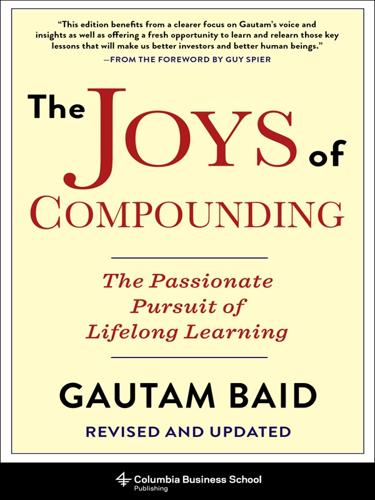
The Joys of Compounding: The Passionate Pursuit of Lifelong Learning, Revised and Updated
by
Gautam Baid
Published 1 Jun 2020
Nate Silver and Philip Tetlock educated me on the follies of forecasting and how we can improve our skills at making estimates through probabilistic thinking, Bayesian belief updating, and the use of relevant base rates. John Allen Paulos, Barbara Oakley, and Jana Vembunarayanan taught me how to engage in intelligent mathematical thinking. Darrell Huff and Charles Wheelan taught me how to interpret statistics more analytically. Atul Gawande and Michael Shearns educated me on the vital role of checklists in improved decision making. Phil Rosenzweig, Elliot Aronson, and Duncan Watts made me aware of the widespread prevalence of hindsight bias. Michael Mauboussin and Annie Duke taught me how to distinguish luck from skill. Mauboussin also educated me on how to distinguish between knowledge of a company’s fundamentals and the current market expectations implied by the stock price.
…
Sheeraz Raza, “Great Interview with Alice Schroeder via Simoleon Sense,” ValueWalk, November 6, 2010, https://www.valuewalk.com/2010/11/great-interview-alice-schroeder-simoleon-sense. 2. Goodreads.com, accessed December 9, 2019, https://www.goodreads.com/quotes/8956691-what-the-human-being-is-best-at-doing-is-interpreting. 3. Quoted in Atul Gawande, The Checklist Manifesto (Gurgaon, India: Penguin Random House, 2014). 4. Charlie Munger, “Wesco 2002 Annual Meeting,” Mungerisms, Pasadena, CA, 2002, http://mungerisms.blogspot.com/2009/08/wesco-2002-annual-meeting.html. 5. Peter Bevelin, Seeking Wisdom: From Darwin to Munger, 3rd ed. (Malmö, Sweden: PCA Publications, 2007). 15.
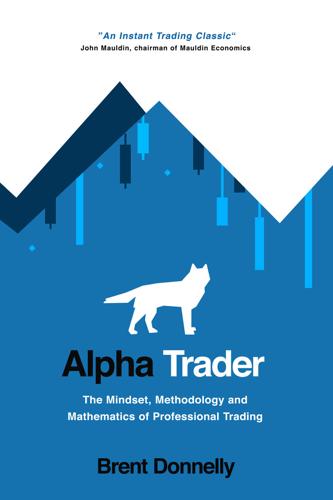
Alpha Trader
by
Brent Donnelly
Published 11 May 2021
Including… Becoming more organized. The Baumeister and Gardner book on willpower that I referenced earlier is a good start if you want to become more organized. Also useful: The Seven Habits of Highly Effective People by Stephen Covey. Written in 1989 but still popular for a reason. The Checklist Manifesto by Atul Gawande. Pretty much exactly what it sounds like. Many interesting examples. The Power of Habit by Charles Duhigg. Almost everything about staying organized comes down to habit. Note that these books can be boiled down into bullet points that will give you 80% of the benefit in 20% of the time. You can get summaries of most major books by googling “Summary, BOOK NAME”, or by going to Goodreads, Blinkist and other websites.
…
New Canaan, Connecticut 2021 APPENDIX A FURTHER READING BOOKS Trading classics Market Wizards (series), Jack Schwager (1989) Reminiscences of a Stock Operator, Edwin Lefèvre (1923) Luck vs. skill, process vs. outcome The Success Equation, Michael Mauboussin (2012) Thinking in Bets, Annie Duke (2018) Be disciplined Willpower, Baumeister and Tierney (2012) The Science of Self-Discipline, Peter Hollins (2017) The Disciplined Trader, Mark Douglas (1990) Behavioral finance bibles Thinking, Fast and Slow, Daniel Kahneman (2011) Irrational Exuberance, Robert Shiller (2000) Get organized The Seven Habits of Highly Effective People, Stephen Covey (1988) The Checklist Manifesto, Atul Gawande (2009) The Power of Habit, Charles Duhigg (2012) Be self-aware The Power of Now, Eckhart Tolle (1997) Breath, James Nestor (2020) The Hour Between Dog and Wolf, John Coates (2012) Get quantitative Fortune’s Formula, William Poundstone (2005) Superforecasting, Dan Gardner and Philip Tetlock (2015) Fooled by Randomness, Nassim Taleb (2001) Fooled by Technical Analysis, Michael Harris (2015) A Man for All Markets, Edward Thorp (2017) Risk, Dan Gardner (2008) How to Lie with Statistics, Darrell Huff (1954) BLOGS, PODCASTS AND NEWSLETTERS Aspen Trading daily and intraday trading newsletter, Dave Floyd Epsilon Theory website, podcast and newsletter, Ben Hunt and Rusty Guynn Exante blog on Substack, Jens Nordvig et al.

The Numbers Game: The Commonsense Guide to Understanding Numbers in the News,in Politics, and inLife
by
Michael Blastland
and
Andrew Dilnot
Published 26 Dec 2008
How dare we, he said, take away their hope? Chance is heartless. “As flies to wanton boys are we to the Gods,” said Shakespeare’s King Lear, “they kill us for their sport.” More comforting amid hurt and distress, maybe, to find a culprit you can hope to hold accountable, or even destroy. When the surgeon and academic Atul Gawande wrote in the late 1990s about why cancer clusters in the United States were seldom the real thing, he quoted the opinion of the chief of California’s Division of Environmental and Occupational Disease Control that more than half the state’s 5,000 districts (2,750 in fact) had a cancer rate above average.
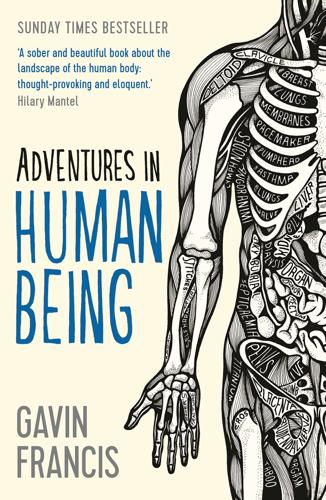
Adventures in Human Being (Wellcome)
by
Gavin Francis
Published 28 Apr 2015
Hip: Jacob & the Angel p. 199 ‘He had studied …’ Italo Svevo, La Coscienza di Zeno (Milan: Einaudi, 1976), p. 109 (author’s translation). p. 202 ‘If someone over the …’ J. A. Grisso et al., ‘Risk Factors for falls as a cause of hip fracture in women’, The New England Journal of Medicine (9 May 1991), 1,326–31. p. 202 ‘Around 40 percent …’ Figures from Atul Gawande, Being Mortal: Medicine and What Matters in the End (London: Profile, 2014). p. 202 ‘Between five and eight …’ P. Haentjens et al., ‘Meta-analysis: Excess Mortality After Hip Fracture Among Older Women and Men’, Annals of Internal Medicine 152 (2010), 380–90. p. 203 ‘His name Yaakov …’ My reading of Jacob’s story has been informed by Geoffrey H.

Spite: The Upside of Your Dark Side
by
Simon McCarthy-Jones
Published 12 Apr 2021
Dostoevsky, Notes from the Underground, pt. 1, chap. 8, p. 2, Page by Page Books, accessed August 22, 2020, www.pagebypagebooks.com/Fyodor_Dostoevsky/Notes_from_the_Underground/Part_I_Chapter_VIII_p2.html. 32. A. Sen, “Freedom of Choice: Concept and Content,” WIDER working papers, August 22, 1987, accessed August 22, 2020, https://ageconsearch.umn.edu/record/295553/files/WP25.pdf. 33. None of this is to say we always want freedom. As the doctor Atul Gawande notes, patients often don’t want the freedom and autonomy their doctors offer. They want choices to be made for them. Gawande cites a personal example of his daughter being rushed to the emergency room. When asked whether he wanted her intubated, his response was to want the choice made for him.
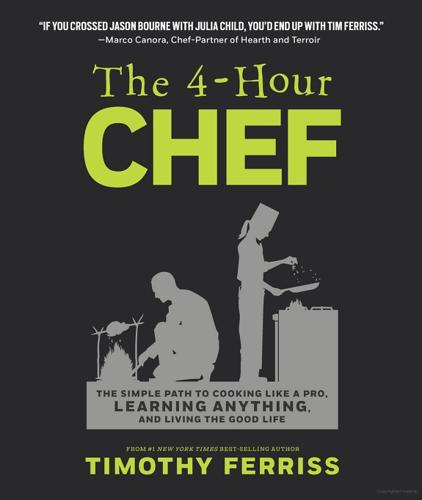
The 4-Hour Chef: The Simple Path to Cooking Like a Pro, Learning Anything, and Living the Good Life
by
Timothy Ferriss
Published 1 Jan 2012
From wrist to fingertip, we were covered with dozens of visible and invisible nicks. We couldn’t have been happier. LITTLE DETAILS, BIG RESULTS How you do anything is how you will do everything. John Wooden, legendary UCLA basketball coach, had his players learn how to put their socks on—step-by-step—during their first all-team meeting of the season. As surgeon Atul Gawande explained in The New Yorker: “He had two purposes in doing this. First, wrinkles cause blisters. Blisters cost games. Second, he wanted his players to learn how crucial seemingly trivial details could be. ‘Details create success’ was the creed of a coach who won 10 NCAA men’s basketball championships.”‡ Below are some of the details acquired over my cramming weekend with JZ.
…
Think of “dead” grammar, presented out of context, to remember deductive. 31 This is known as an inductive approach to teaching. I give you the real-world examples (sample sentences), and you pick up the principles (grammar) by spotting patterns. 32 The International Culinary Center, formerly known as the French Culinary Institute. 33 Also the serial restaurateur “Z” from the Introduction. ‡ Atul Gawande, “Personal Best,”New Yorker, October 3, 2011, http://www.newyorker.com/reporting/2011/10/03/111003fa_fact_gawande (accessed September 16, 2012). 34 Though, in 2011, YC was twice as hard to get into. ‡ W. A. Johnson and others, “Attention Capture by Novel Stimuli,” Journal of Experimental Psychology, vol. 119 (1990): 397–411. 35 Some might criticize this bar, calling me a jack-of-all-trades.

Discardia: More Life, Less Stuff
by
Dinah Sanders
Published 7 Oct 2011
Identify yourself as an organ donor and let your family know that you want to have your body parts distributed to someone who needs them after you die. Learn more at organdonor.gov or search for a similar resource in your country if you're outside the United States. Think and talk about your preferences in life and death. As Dr. Atul Gawande reported in his 2010 article “Letting Go: What Should Medicine Do When It Can’t Save Your Life?” in The New Yorker, “People have concerns besides simply prolonging their lives. Surveys of patients with terminal illness find that their top priorities include, in addition to avoiding suffering, being with family, having the touch of others, being mentally aware, and not becoming a burden to others.”
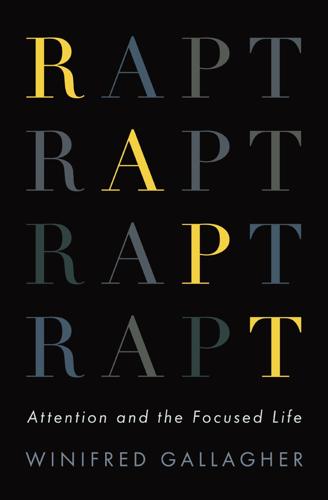
Rapt: Attention and the Focused Life
by
Winifred Gallagher
Published 9 Mar 2009
Gardner (eds.), Handbook of Motivation Science. New York: Guilford, 2007. p.183. In an experiment on how best to deal: T. L. Webb and P. Sheeran, “How Do Implementation Intentions Promote Goal Attainment? A Test of Component Processes.” Journal of Experimental Social Psychology 43, 2007. p.183. Concerned about the high incidence: Atul Gawande, “The Checklist.” The New Yorker, December 10, 2007. p.184. Some intriguing new research: George Ainslie, Breakdown of Will. New York: Cambridge University Press, 2001. CHAPTER 13: HEALTH p.189. Exhibit A for attention’s power: “Larry Stewart, a Businessman Known for a Santa-Size Generosity, Dies at 58.”
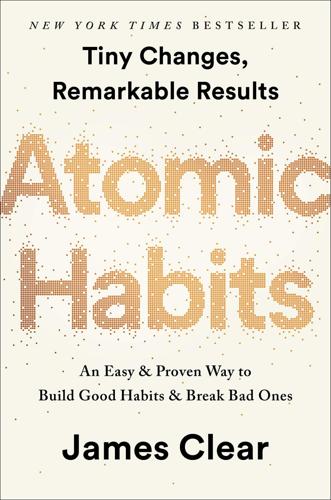
Atomic Habits: An Easy & Proven Way to Build Good Habits & Break Bad Ones
by
James Clear
Published 15 Oct 2018
CHAPTER 15 over nine million people called it home: “Population Size and Growth of Major Cities, 1998 Census,” Population Census Organization, http://www.pbs.gov.pk/sites/default/files//tables/POPULATION%20SIZE%20AND%20GROWTH%20OF%20MAJOR%20CITIES.pdf. Over 60 percent of Karachi’s residents: Sabiah Askari, Studies on Karachi: Papers Presented at the Karachi Conference 2013 (Newcastle upon Tyne, UK: Cambridge Scholars, 2015). It was this public health crisis that had brought Stephen Luby to Pakistan: Atul Gawande, The Checklist Manifesto: How to Get Things Right (Gurgaon, India: Penguin Random House, 2014). “In Pakistan, Safeguard was a premium soap”: All quotes in this section are from an email conversation with Stephen Luby on May 28, 2018. The rate of diarrhea fell by 52 percent: Stephen P. Luby et al., “Effect of Handwashing on Child Health: A Randomised Controlled Trial,” Lancet 366, no. 9481 (2005), doi:10.1016/s0140–6736(05)66912–7.

Chasing My Cure: A Doctor's Race to Turn Hope Into Action; A Memoir
by
David Fajgenbaum
Published 9 Sep 2019
—ANGELA DUCKWORTH, New York Times bestselling author of Grit “This book is so gripping that I read it in one sitting—and so moving that I can’t stop thinking about it months later. It’s an extraordinary memoir, filled with wisdom, by a doctor who came face-to-face with his own mortality. It belongs in rare company with Atul Gawande’s writings and When Breath Becomes Air.” —ADAM GRANT, New York Times bestselling author of Give and Take and Originals and co-author of Option B “Chasing My Cure is a medical thriller that grapples with supreme stakes—real love, bedrock faith, and how we spend our time on earth. Fast-paced and achingly transparent, David Fajgenbaum’s deeply thoughtful memoir will have you rethinking your life’s priorities.”
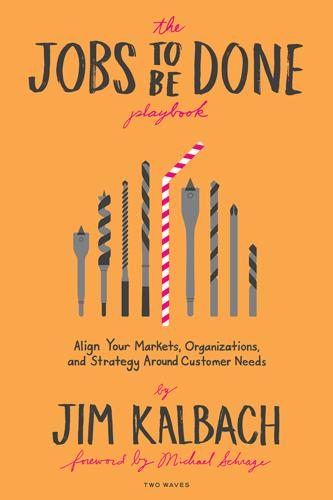
The Jobs to Be Done Playbook: Align Your Markets, Organization, and Strategy Around Customer Needs
by
Jim Kalbach
Published 6 Apr 2020
In my classes, workshops, and advisory work, I have the good fortune to work with talented people who truly want to do excellent work. I like and admire them. They are talented and smart. But oftentimes, because they are so talented and smart, they presume or assume they know the fundamentals of something when, in truth, they do not. With apologies to Atul Gawande, they have a “Checklist Manifesto” grasp of what they’re trying to do. That is, they’re doing everything they’re supposed to do but lack an essence and esprit that makes the work compelling. What people minimize (or overlook) about Gawande’s checklists is that they are supposed to be prompts and reminders for people who truly know their stuff.

The Drunkard's Walk: How Randomness Rules Our Lives
by
Leonard Mlodinow
Published 12 May 2008
Michael Mauboussin and Kristen Bartholdson, “On Streaks: Perception, Probability, and Skill,” Consilient Observer (Credit Suisse–First Boston) 2, no. 8 (April 22, 2003). 29. Merton Miller on “Trillion Dollar Bet,” NOVA, PBS broadcast, February 8, 2000. 30. R. D. Clarke, “An Application of the Poisson Distribution,” Journal of the Institute of Actuaries 72 (1946): 48. 31. Atul Gawande, “The Cancer Cluster Myth,” The New Yorker, February 28, 1998, pp. 34–37. 32. Ibid. 33. Bruno Bettelheim, “Individual and Mass Behavior in Extreme Situations,” Journal of Abnormal and Social Psychology 38 (1943): 417–52. 34. Curt P. Richter, “On the Phenomenon of Sudden Death in Animals and Man,” Psychosomatic Medicine 19 (1957): 191–98. 35.

The Empathy Exams: Essays
by
Leslie Jamison
Published 30 Mar 2014
The notion that Morgellons patients might be “making it up” is more complicated than it seems. It could mean anything from intentional fabrication to an itch that’s gotten out of hand. Itching is powerful: the impulse that tells someone to scratch lights up the same neural pathways as chemical addiction. In a New Yorker article titled “The Itch”—like a creature out of sci-fi—Atul Gawande tells the story of a Massachusetts woman with a chronic scalp itch who eventually scratched right into her own brain, and a man who killed himself in the night by scratching into his carotid artery. There was no discernible condition underneath their itches; no way to determine if these itches had begun on their skin or in their minds.
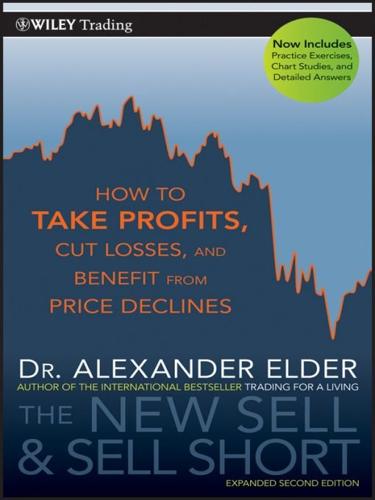
The New Sell and Sell Short: How to Take Profits, Cut Losses, and Benefit From Price Declines
by
Alexander Elder
Published 1 Jan 2008
I wonder what I should do....” Instead of scratching and thinking, he opens his manual to the Smoke page and, with his co-pilot, goes through clearly defined “if-then” questions and answers, which lead to specific actions. An excellent recent book on developing a checklist is The Checklist Manifesto by Dr. Atul Gawande. Still, even a printed decision-making tree, approved by the best airline, can never be complete. In his fascinating book The Black Box, Malcolm MacPherson serves up dozens of transcripts from the black boxes of crashed airliners. A trader can learn a great deal from watching how some pilots fall apart under pressure while others rise up to the challenge.

You Say Tomato, I Say Shut Up
by
Annabelle Gurwitch
Published 31 Aug 2010
I had to explain that the result was suspect because he’d entered erroneous information to the effect that I have a negative attitude about my life. I’m not negative about my life; I’m negative about life in general. In fact, if there’s anything positive about my psychology, it’s my negativity. One of my favorite writers at the New Yorker, Dr. Atul Gawande of the Harvard School of Public Health, has written about the importance of critical thinking, which, he argues, leads toward improving systems. “In the running of schools, businesses, in planning war, in caring for the sick and injured, negative thinking may be exactly what we need.” It isn’t a stretch to see that these same skills are exactly what are needed to run a family.* In fact, numerous credible sources see a direct correlation between a reliance on positive thinking, which lulls people into optimistic complacency and overconfidence, and lack of oversight, fueling everything from the housing downturn, the stock market debacle, and the Bernie Madoff scandal.
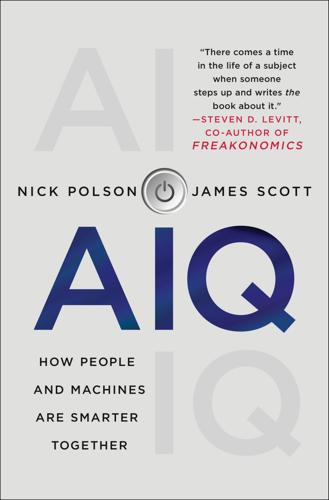
AIQ: How People and Machines Are Smarter Together
by
Nick Polson
and
James Scott
Published 14 May 2018
That change was made only after a team of 19 experts conducted a massive synthesis of all available data and concluded that the new recommendations were likely to prevent 11 false positives out of every 500 women screened, with no discernible impact on the number of deaths from breast cancer.41 Medical checklists are great, and the manner in which they’re created and updated represents a triumph of data over anecdote—something that Florence Nightingale, were she still around, could take immense pride in. Checklists save lives by helping doctors catch subtle clues when making complex decisions. Inspired by his experiences as a surgeon, the medical writer Atul Gawande has even written The Checklist Manifesto, about how checklists can help in making complex decisions everywhere, not just in medicine. He makes a good case. But checklists can fail—especially when they rely on what Katherine Heller calls “threshold thinking.” To see this, let’s return to the trend that’s so obvious from the scatter plot of Joe’s kidney readings that we showed you earlier.
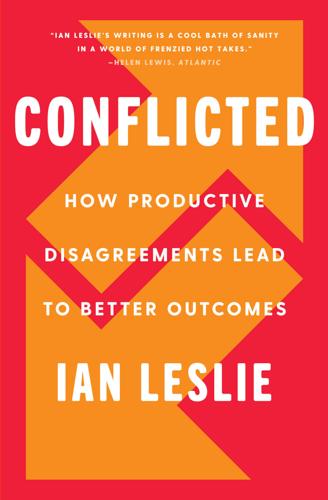
Conflicted: How Productive Disagreements Lead to Better Outcomes
by
Ian Leslie
Published 23 Feb 2021
Then they relax. Once the emotion is on the table it’s easier for them to be less angry. It’s remarkable to watch.’ Unarticulated emotion is like an unexploded bomb, and naming it somehow defuses it. But you have to be listening. In a commencement speech to UCLA medical graduates, surgeon and writer Atul Gawande told a story from when he was a student. While working the nightshift in a hospital emergency department, he was assigned a prisoner who had swallowed half a razor blade and slashed his wrist. As Gawande investigated his injuries, the man kept up a foul-mouthed stream of invective towards the hospital staff, the policemen who had taken him in, and the incompetent young doctor who was treating him.
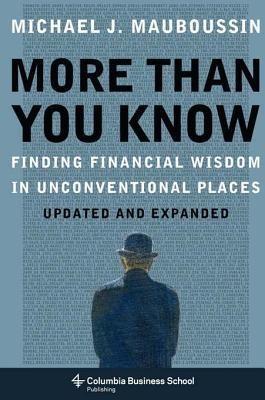
More Than You Know: Finding Financial Wisdom in Unconventional Places (Updated and Expanded)
by
Michael J. Mauboussin
Published 1 Jan 2006
Mauboussin and Kristen Bartholdson, “Long Strange Trip: Thoughts on Stock Market Returns,” Credit Suisse First Boston Equity Research, January 9, 2003. 6 See chapter 3. 6. Are You an Expert? 1 J. Scott Armstrong, “The Seer-Sucker Theory: The Value of Experts in Forecasting,” Technology Review 83 (June-July 1980): 16-24. 2 Atul Gawande, Complications: A Surgeon’s Notes on an Imperfect Science (New York: Picador, 2002), 35-37. 3 Paul J. Feltovich, Rand J. Spiro, and Richard L. Coulsen, “Issues of Expert Flexibility in Contexts Characterized by Complexity and Change,” in Expertise in Context: Human and Machine, ed. Paul J. Feltovich, Kenneth M.
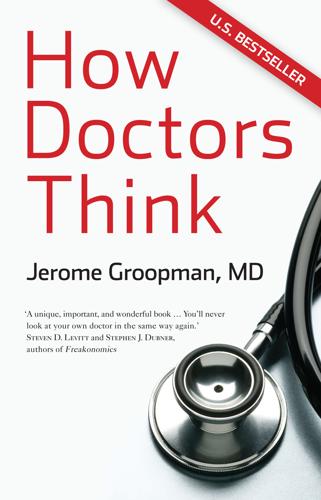
How Doctors Think
by
Jerome Groopman
Published 15 Jan 2007
Sherwin Nuland writes beautifully about the experience of the seasoned surgeon in How We Die: Reflections on Life's Final Chapter (New York: Knopf, 1994), and How We Live (New York: Vintage, 1998). For those interested in the perspective of a surgical resident in training, see a book by my colleague at The New Yorker Atul Gawande, Complications: A Surgeon's Notes on an Imperfect Science (New York: Metropolitan Books, 2002). Dr. Light's comments about every patient coming in with a story might strike the reader as unusual, since surgeons are often depicted as being interested only in working with their hands. But as Roter and Hall said, the best ones have the full package.

The Connected Company
by
Dave Gray
and
Thomas Vander Wal
Published 2 Dec 2014
PROPRIETARY TECHNOLOGIES Miriah Meyer, “Gamer cracks code, finds jewel,” The Chicago Tribune, August 28, 2006. Chapter 16. How connected companies learn You can’t make a recipe for something as complicated as surgery. Instead, you can make a recipe for how to have a team that’s prepared for the unexpected. — Atul Gawande Connected companies grow and learn over time. Like all life forms and complex systems, their growth is governed by natural rhythms and patterns. As individuals and teams learn, they must find ways to share their knowledge with the larger community. As communities learn, platforms must learn how to support them.

You Can't Make This Stuff Up: The Complete Guide to Writing Creative Nonfiction--From Memoir to Literary Journalism and Everything in Between
by
Lee Gutkind
Published 13 Aug 2012
The writer, through history, has always tried to make a difference, to touch readers, to make them aware of what is going on around them. We have learned that information, enhanced by story, can be ammunition: our weapon for change. President Obama made his entire staff read a New Yorker essay by Atul Gawande about ways to control the rising costs of health care. Gawande spotlighted the health care system in McAllen, Texas, where patients suffer through twice as many cardiac surgeries as the national average, ambulance spending is four times higher and health care costs during the end of life are eight times higher, and compares health care costs in similar size towns in order to spotlight unnecessary waste and mismanagement.

Randomistas: How Radical Researchers Changed Our World
by
Andrew Leigh
Published 14 Sep 2018
Surgeon Ian Harris gives the example of spine fusion surgery for back pain: an operation now performed on 1 in 1000 Americans each year, even though randomised trials show no better results than for intensive rehabilitation.64 Harris notes that ‘the more you know, the harder it gets . . . a conflict develops between what you understand to be true, based on scientific research . . . and what everyone else is doing.’65 Surgeon and author Atul Gawande argues that ‘pointless medical care’ costs hundreds of billions of dollars annually.66 Each year, one in four Americans receives a medical test or treatment that has been proven through a randomised trial to be useless or harmful.67 An Australian study identified over 150 medical practices that are commonly used despite being unsafe or ineffective.68 The randomistas not only need to produce more evidence, they also need to do a better job at publicising what they know already. 3 DECREASING DISADVANTAGE, ONE COIN TOSS AT A TIME The first time Daniel’s mum threw him out of home, he was thirteen.1 He’d grown up around drugs, alcohol and dysfunction, and thought it was ‘fun . . . a big adventure’.
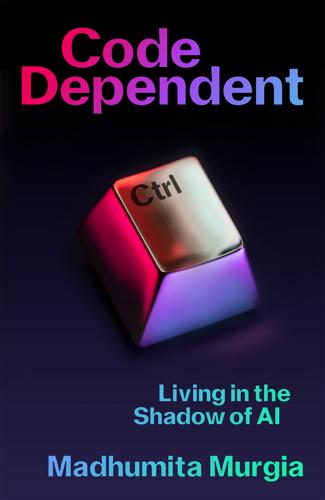
Code Dependent: Living in the Shadow of AI
by
Madhumita Murgia
Published 20 Mar 2024
Shibu Vijayan as Medical Director – Global Health’, Qure.ai, September 28, 2022, https://www.qure.ai/news_press_coverages/qure-ai-appoints-dr-shibu-vijayan-as-medical-director-global-health. 4 Anjali Singh, ‘Qure.ai, PATH India Partner to Provide TB, Covid Screening in Maharashtra’, Business Standard, September 14, 2023, https://www.business-standard.com/companies/news/qure-ai-path-india-partner-to-provide-tb-covid-screening-in-maharashtra-123091400652_1.html. 5 Kritti Bhalla, ‘Qure.ai Raises $40 Million to Expand Its Presence in US and Europe’, Business Insider, March 29, 2022, https://www.businessinsider.in/business/startups/news/qure-ai-raises-40-million-to-expand-its-presence-in-us-and-europe/articleshow/90514343.cms; Singh, ‘Qure.ai, PATH India Partner to Provide TB, Covid Screening in Maharashtra’. 6 ‘India COVID Death Toll Crosses 400,000 – Half Died in Second Wave’, Al Jazeera, July 2, 2021, https://www.aljazeera.com/news/2021/7/2/india-covid-death-toll-400000-black-fungus. 7 V. P. Sharma and Vas Dev, ‘Prospects of Malaria Control in Northeastern India with Particular Reference to Assam’, January 2006, https://www.nirth.res.in/publications/nsth/4.VP.Sharma.pdf. 8 Atul Gawande, Complications: A Surgeon’s Notes on an Imperfect Science (Profile Books Ltd, 2002). 9 Sendhil Mullainathan and Ziad Obermeyer, ‘Diagnosing Physician Error: A Machine Learning Approach to Low-Value Health Care’, The Quarterly Journal of Economics 137, no. 2 (April 8, 2022): 679–727, https://doi.org/10.1093/qje/qjab046. 10 ‘2019 Community Health Needs Assessment – Focus Group Results’, n.d., Fort Defiance Indian Hospital Board, Inc., https://www.fdihb.org/documents/FDIHBInc_Community_Health_Needs_Assessment_2021-2022.pdf. 11 Ana M.
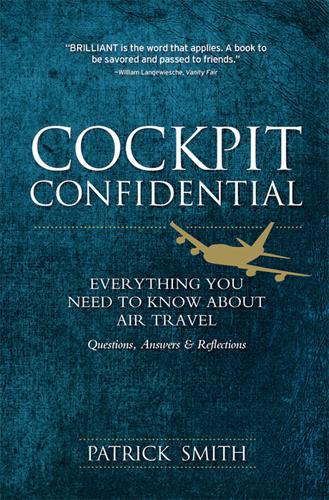
Cockpit Confidential: Everything You Need to Know About Air Travel: Questions, Answers, and Reflections
by
Patrick Smith
Published 6 May 2013
It has vastly improved their capabilities, but it by no means diminishes the experience and skill required to perform at that level and has not come remotely close to rendering them redundant. A plane is able to fly itself about as much as the modern operating room can perform an operation by itself. “Talk about medical progress, and people think about technology,” wrote the surgeon and author Atul Gawande in a 2011 issue of The New Yorker. “But the capabilities of doctors matter every bit as much as the technology. This is true of all professions. What ultimately makes the difference is how well people use technology.” That about nails it. And what do terms like “automatic” and “autopilot” mean anyway?

The Intelligence Trap: Revolutionise Your Thinking and Make Wiser Decisions
by
David Robson
Published 7 Mar 2019
‘You organise your ideas better if you have a pencil and paper,’ she explained. (Psychological research does indeed suggest that your memory often functions better if you are allowed to doodle as you talk.45) Her aim is to teach doctors to be similarly reflective concerning the ways they make their decision making. Like the medical checklist, which the doctor and writer Atul Gawande has shown to be so powerful for preventing memory failures during surgery, the concept is superficially simple: to pause, think and question your assumptions. Early attempts to engage ‘system 2’ thinking had been disappointing, however; doctors told to use pure analysis, in place of intuition – by immediately listing all the alternative hypotheses, for instance – often performed worse than those who had taken a less deliberative, more intuitive approach.46 In light of the somatic marker hypothesis, this makes sense.
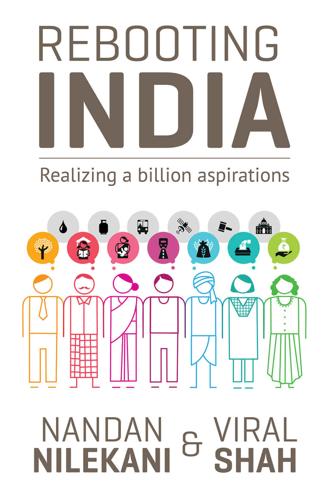
Rebooting India: Realizing a Billion Aspirations
by
Nandan Nilekani
Published 4 Feb 2016
Today, the average person’s medical history is usually encapsulated in a bulging file full of doctor’s notes, test results, X-rays and scan reports stretching back several years. Medical service providers usually have their own internal data storage systems, which operate completely independent of each other, so it is impossible to track the progression of a particular patient through the medical system. The surgeon and author Atul Gawande describes an interesting experiment carried out by Jeffrey Brenner, a physician in Camden, New Jersey.10 Brenner started monitoring the flow of patients into Camden’s hospitals, and focused his attention on those patients who cost insurers the most money. As it turns out, these were not people having complex medical procedures or being given expensive medicines—they were people whose illnesses were not being managed correctly, like the man who wasn’t taking his blood pressure pills and was headed for kidney failure as a result.
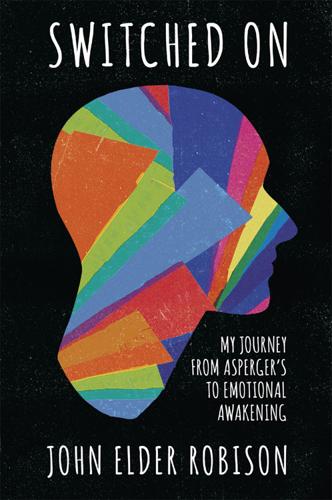
Switched On: My Journey From Asperger's to Emotional Awakening
by
John Elder Robison
Published 6 Apr 2016
Last year she held her first conference, just before the annual International Meeting for Autism Research (IMFAR). I hope she is successful at raising awareness among the folks who fund medical research because I fully agree that TMS has tremendous potential. When we talked, she reminded me of Atul Gawande’s thought-provoking New Yorker piece called “Slow Ideas.” In it, Gawande says that we all want useful medical innovations to spread virally, and in a few cases they do. But for the most part, for large numbers of people to benefit from a new medical discovery, it takes twenty to forty years between the original inspiration and widespread deployment.
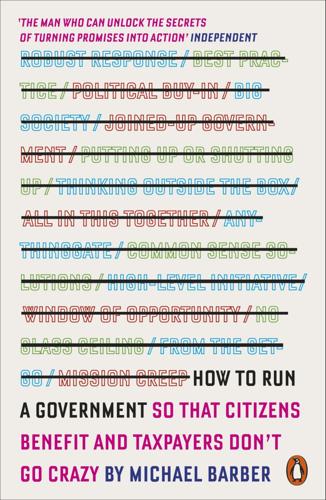
How to Run a Government: So That Citizens Benefit and Taxpayers Don't Go Crazy
by
Michael Barber
Published 12 Mar 2015
The opposite of ‘reliable’ is not ‘brilliant’, it is ‘unreliable’. And standards, once set, change the lives of citizens only if they are diligently applied. This requires a cultural shift in the professions, as set out in Table 12. In its school system, Singapore comes close to illustrating what this shift looks like. Atul Gawande, the wonderful writer on largely medical issues, puts it this way: The Required Cultural Shift Table 12 People underestimate the importance of diligence as a virtue. No doubt this has something to do with how supremely mundane it seems … There is a flavour of simplistic relentlessness to it.
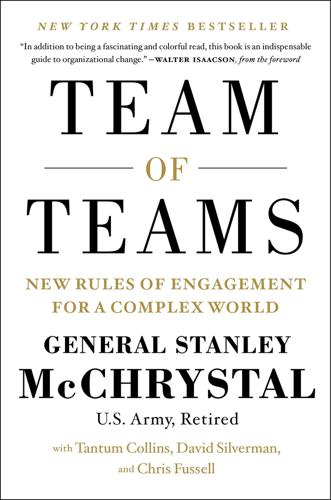
Team of Teams: New Rules of Engagement for a Complex World
by
General Stanley McChrystal
,
Tantum Collins
,
David Silverman
and
Chris Fussell
Published 11 May 2015
“There are a lot of aggressive assholes,” admits Dr. Carty. “That’s the industry norm.” Medical school is fiercely competitive, compensation structures in private practices can incentivize fighting for every patient, and turf battles are common and usually come at the expense of the patient. As doctor and writer Atul Gawande put it, “We have trained, hired, and rewarded physicians to be cowboys, when what we want are pit crews for patients.” Emergency care, however, is different. During the Vietnam War military surgeons discovered that moving the lead surgeon away from the patient and having him stand at the foot of the bed during resuscitation and evaluation allowed for more actions to occur simultaneously.
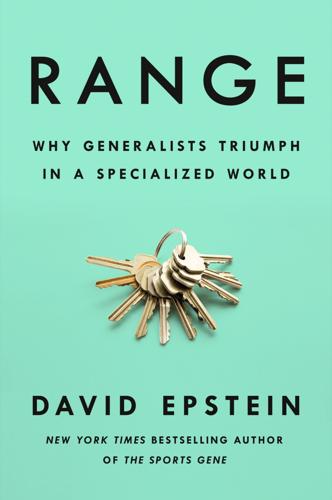
Range: Why Generalists Triumph in a Specialized World
by
David Epstein
Published 1 Mar 2019
Our best-known icons of success are elevated for their precocity and their head starts—Mozart at the keyboard, Facebook CEO Mark Zuckerberg at the other kind of keyboard. The response, in every field, to a ballooning library of human knowledge and an interconnected world has been to exalt increasingly narrow focus. Oncologists no longer specialize in cancer, but rather in cancer related to a single organ, and the trend advances each year. Surgeon and writer Atul Gawande pointed out that when doctors joke about left ear surgeons, “we have to check to be sure they don’t exist.” In the ten-thousand-hours-themed bestseller Bounce, British journalist Matthew Syed suggested that the British government was failing for a lack of following the Tiger Woods path of unwavering specialization.
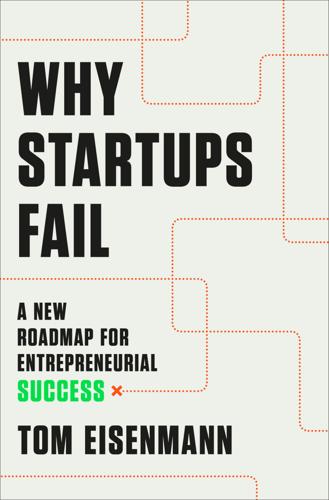
Why Startups Fail: A New Roadmap for Entrepreneurial Success
by
Tom Eisenmann
Published 29 Mar 2021
Eliot Cohen and John Gooch, Military Misfortunes: The Anatomy of Failure in War (New York: Free Press, 1990, examines failure in battle. Richard Neustadt and Ernest May, Thinking in Time: The Uses of History for Decision Makers (New York: Free Press, 1989), contrasts foreign and domestic policy successes and failures. Atul Gawande, The Checklist Manifesto: How to Get Things Right (New York: Metropolitan Books, 2009), explores medical failures and how to avoid them. “If you cannot fail”: Eric Ries, The Lean Startup: How Today’s Entrepreneurs Use Radical Innovation to Create Successful Businesses (New York: Currency, 2011), p. 56.
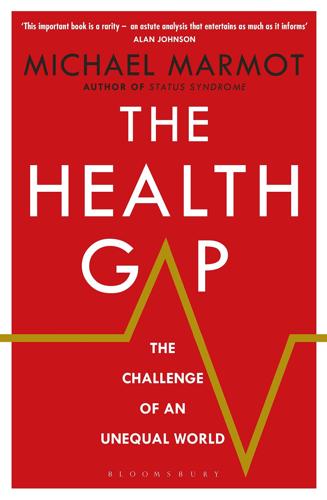
The Health Gap: The Challenge of an Unequal World
by
Michael Marmot
Published 9 Sep 2015
It does not capture the rich variety in the lives of older people as they are actually lived in different countries and, given my central theme, in people living in different social circumstances. The inevitable declines that come with age pose challenges for health and social care. It can be done well, and it can be done badly. The Harvard surgeon and writer Atul Gawande asks, in a sensitive way, what the appropriate response of a caring, compassionate health-care system should be – neither neglect nor heroic over-treatment in attempting futilely to stave off the inevitable.1 Important as it is, health and social care for the elderly is not my topic here. I want to explore what happens before people need their final episodes of care.
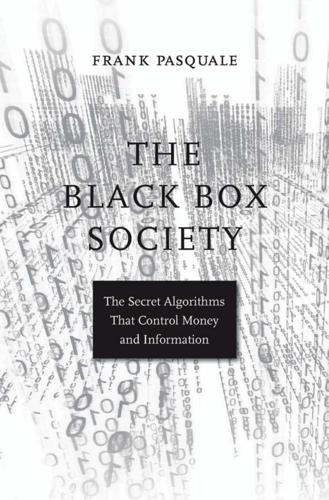
The Black Box Society: The Secret Algorithms That Control Money and Information
by
Frank Pasquale
Published 17 Nov 2014
Wedel, Shadow Elite: How the World’s New Power Brokers Undermine Democracy, Government, and the Free Market (New York: Basic Books, 2009); Frank Pasquale, “Reclaiming Egalitarianism in the Political Theory of Campaign Finance Reform,” University of Illinois Law Review 45 (2008): 599– 660. 62. See Michael Abramowicz, “Perfecting Patent Prizes,” Vanderbilt Law Review 56 (2003): 115–236. 63. Here, again, the health sector is ahead of reputation, search, and finance fi rms, adopting a raft of pi lot programs via the Affordable Care Act. Atul Gawande, “Testing, Testing,” The New Yorker, December 14, 2009, http:// www.newyorker.com /reporting /2009 /12/14 /091214fa _fact _gawande ?currentPage=all. 64. Nicola Jentzsch, Financial Privacy: An International Comparison of Credit Reporting Systems (Berlin: Springer-Verlag, 2007), 62. 65. Siva Vaidhyanathan, The Googlization of Everything (And Why We Should Worry) (Berkeley: University of California Press, 2010). 66.
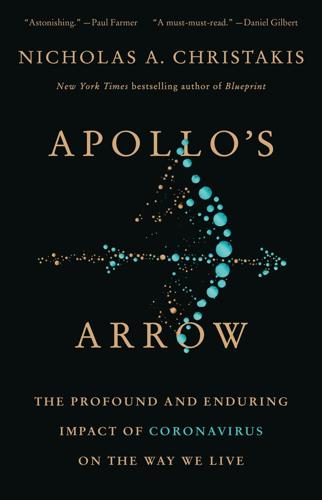
Apollo's Arrow: The Profound and Enduring Impact of Coronavirus on the Way We Live
by
Nicholas A. Christakis
Published 27 Oct 2020
As a nurse in Hawaii cogently pointed out, however, “[We] are the same people who are going to take care of you if you wind up in the hospital…and if I’m sleeping in my car, I’m not functioning my best.”23 Doctors and nurses are trained to maintain safety precautions for themselves and others, and they take extraordinary measures to keep others safe, both inside hospital walls and beyond. In fact, as Dr. Atul Gawande observed, “In the face of enormous risk, American hospitals have learned how to avoid becoming sites of spread.”24 Out of a hospital staff of 75,000 in his Boston health system, there were so few workplace transmissions in the spring of 2020 that he argued hospitals should be providing a model of how to successfully reopen other sectors of the economy.
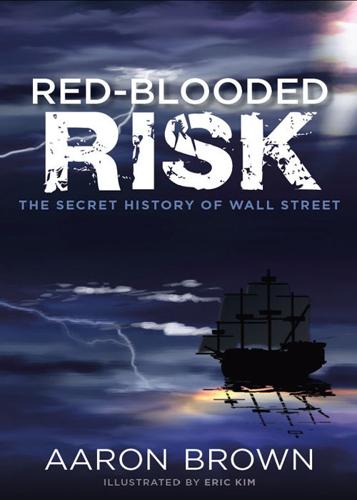
Red-Blooded Risk: The Secret History of Wall Street
by
Aaron Brown
and
Eric Kim
Published 10 Oct 2011
Good examples are To Engineer Is Human: The Role of Failure in Successful Design by Henry Petroski, Inviting Disaster: Lessons from the Edge of Technology by James R. Chiles, Normal Accidents: Living with High-Risk Technologies by Charles Perrow, The Limits of Safety by Scott Douglas Sagan, The Upside of Turbulence: Seizing Opportunity in an Uncertain World by Donald N. Sull, and The Checklist Manifesto: How to Get Things Right by Atul Gawande. I have four recommendations if your interest is game theory. All are technical but readable. I went to Harvard with Drew Fudenberg, who wrote (with David Levine) A Long-Run Collaboration on Games with Long-Run Patient Players. A few years later, Colin Camerer was in the University of Chicago PhD program with me.

The Personal MBA: A World-Class Business Education in a Single Volume
by
Josh Kaufman
Published 2 Feb 2011
As a result, plane crashes are extremely rare—statistically, it’s safer to fly commercially than to drive. Even simple processes can benefit from Systemization and the use of Checklists. In 2001, a study on the effects of Checklisting was conducted by Dr. Peter Pronovost, which was described in detail in Atul Gawande’s The Checklist Manifesto and in an article Gawande published in the New Yorker. 2 The study was conducted in a hospital in Detroit that had the highest rate of ten-day IV line infections (a costly and life-threatening condition) in the country. Pronovost’s objective was to determine whether or not using Checklists would reduce the rate of infections.
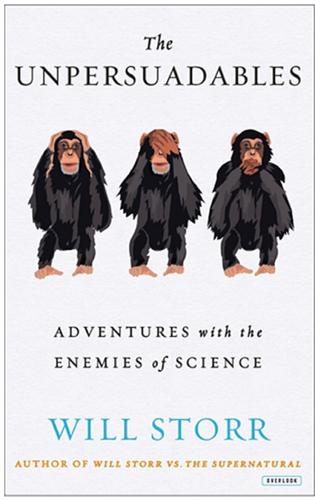
The Unpersuadables: Adventures With the Enemies of Science
by
Will Storr
Published 1 Jan 2013
, Washington Post, 20 January 2008. 122 the moment they discovered the job was related to Morgellons: Randy Wymore, presentation, fourth Annual Morgellons Conference in Austin, Texas, 2 April 2011. 128 I find a 2008 paper on Morgellons: Robert E. Accordino et al., ‘Morgellons Disease?’, Dermatologic Therapy, vol. 21, issue 1, pp. 8–12, January 2008. 129 In 1987 a team of German researchers found: Atul Gawande, ‘The Itch’, New Yorker, 30 June 2008. 135 ‘No parasites or mycobacteria were detected,’ it reports: M. L. Pearson, J. V. Selby, K. A. Katz, V. Cantrell, C. R. Braden et al., ‘Clinical, Epidemiologic, Histopathologic and Molecular Features of an Unexplained Dermopathy’, PLoS ONE 7(1) (2012): e29908. doi:10.1371/journal.pone.0029908. 135 Commenting on the work, Steven Novella: ‘Morgellons, Creating a New Disease’, www.skepticblog.org, 6 February 2012. 9: ‘Top Dog wants his name in’ page 145 In his book Doctoring the Mind: Richard Bentall, Doctoring the Mind, Allen Lane, 2009, p. 131. 145 A typical example is a 2004 paper: P.
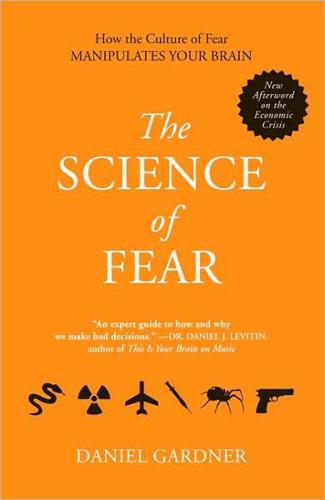
The Science of Fear: How the Culture of Fear Manipulates Your Brain
by
Daniel Gardner
Published 23 Jun 2009
Finally, a third group was given the average rating earned by each course in a survey of students who had taken the courses previously: In sharp contrast with the personal anecdotes, the data had no influence at all. 95: “. . . mattered less than the profile.” Kahneman and Tversky dubbed this “base-rate neglect.” 99: “. . . more about the power of Gut-based judgments than they do about cancer.” For a good overview, see Atul Gawande, The Cancer-Cluster Myth, The New Yorker, February 8, 1998. CHAPTER SIX 109: “. . . go along with the false answers they gave.” Robert Baron, Joseph Vandello, and Bethany Brunsman, The Forgotten Variable in Conformity Research: The Impact of Task Importance on Social Influence, Journal of Personality and Social Psychology 71:915-927. 111: "The correct rule is actually ‘any three numbers in ascending order.’ ” There are other rules that would also work.

Misbehaving: The Making of Behavioral Economics
by
Richard H. Thaler
Published 10 May 2015
They are cheaper than lawyers or consultants. Speak up. Many organizational errors could have been easily prevented if someone had been willing to tell the boss that something was going wrong. One vivid example of this comes from the high-stakes world of commercial aviation, as chronicled by Atul Gawande, a champion of reducing Human error, in his recent book The Checklist Manifesto. Over 500 people lost their lives in a 1977 runway crash because the second officer of a KLM flight was too timid to question the authority of the captain, his “boss.” After mishearing instructions about another plane still on the same runway, the captain continued to speed the plane forward for takeoff.

The Patient Will See You Now: The Future of Medicine Is in Your Hands
by
Eric Topol
Published 6 Jan 2015
Source: “That’s Where the Money Is,” The Economist, May 31, 2014, http://www.economist.com/news/leaders/21603026-how-hand-over-272-billion-year-criminals-thats-where-money. Surgery creates another opportunity for waste when complications occur, as complications lead to higher reimbursement in the American medical system. Complications include infections, problems with wound healing, blood clots, heart attacks, and pneumonia. Atul Gawande and colleagues published a report in 2013 on over thirty-four thousand surgeries, of which over 5 percent had at least one complication.41 The difference in cost was striking. For the uncomplicated operations, the average reimbursement was $16,936, compared with $39,017 for the complicated procedures.41 A reward incentive for complications is not a rational approach in medicine.
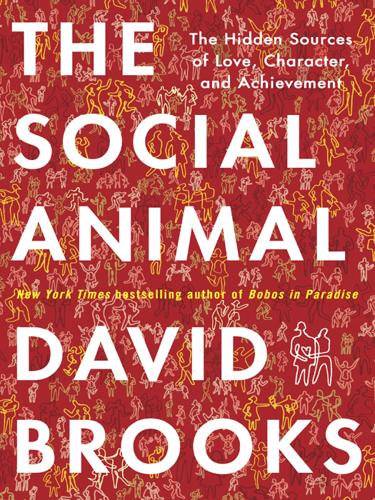
The Social Animal: The Hidden Sources of Love, Character, and Achievement
by
David Brooks
Published 8 Mar 2011
Putnam’s Sons, 1907), 154. 34 “In political activity” Michael Oakeshott, “Political Education,” in Rationalism in Politics and Other Essays (London: Methuen, 1977), 127. 35 Milton wrote Paradise Lost Thomas Sowell, Marxism: Philosophy and Economics (London: George Allen & Unwin, Ltd., 1985), 14. CHAPTER 21: THE OTHER EDUCATION 1 the muscles around the jaw Atul Gawande, “The Way We Age Now,” The New Yorker, April 30, 2007, http://www.newyorker.com/reporting/2007/04/30/070430fa_fact_gawande. 2 40 percent end up Gawande, “The Way We Age Now.” 3 While many neurons die Patricia A. Reuter-Lorenz and Cindy Lustig, “Brain Aging: Reorganizing Discoveries About the Aging Mind,” Current Opinion in Neurobiology 15 (2005): 245–51, http://www.bus.umich.edu/neuroacrp/Yoon/ReuterLorenzLustig2005.pdf. 4 air traffic controllers Louis Cozolino, The Healthy Aging Brain: Sustaining Attachment, Attaining Wisdom (New York: W.W.

Trend Following: How Great Traders Make Millions in Up or Down Markets
by
Michael W. Covel
Published 19 Mar 2007
Bottom line—they never get to where they want to go. Life becomes one big rationalization (or excuse) for them. • Winners take responsibility. Losers place blame. • You have to believe from the start that you can do it. It takes courage to do what the majority is not doing. • Who is John Galt? • Atul Gawande speaks directly to the importance of practice: “There have now been many studies of elite performers— concert violinists, chess grandmasters, professional ice-skaters, mathematicians, and so forth—and the biggest difference researchers find between them and lesser performers is the amount of deliberate practice they’ve accumulated.

Lifespan: Why We Age—and Why We Don't Have To
by
David A. Sinclair
and
Matthew D. Laplante
Published 9 Sep 2019
People in rich countries often spend a decade or more suffering through illness after illness at the ends of their lives. We think this is normal. As lifespans continue to increase in poorer nations, this will become the fate of billions of additional people. Our successes in extending life, the surgeon and doctor Atul Gawande has noted, have had the effect of “making mortality a medical experience.”6 But what if it didn’t have to be that way? What if we could be younger longer? Not years longer but decades longer. What if those final years didn’t look so terribly different from the years that came before them? And what if, by saving ourselves, we could also save the world?

Stress Test: Reflections on Financial Crises
by
Timothy F. Geithner
Published 11 May 2014
Because there will be a next crisis, despite all we did to improve the resilience of the system. Perhaps my experience can help future policymakers prepare for it, react to it, and try to defuse it before it does too much damage. Y. V. REDDY, India’s central banker, gave me a book during the crisis called Complications: Notes from the Life of a Young Surgeon, by Atul Gawande. He told me it was the best book I would ever read about central banking, and the parallels with financial crisis management really are striking. It’s about making life-or-death decisions in a fog of uncertainty, dealing with the constant risk of catastrophic failure. It’s not a coincidence that after the crisis wound down and I started watching some TV again, I got into House M.D., the series about a misanthropic doctor who leads a team focusing on mysterious medical cases.
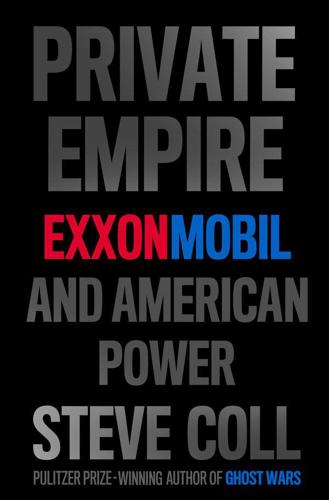
Private Empire: ExxonMobil and American Power
by
Steve Coll
Published 30 Apr 2012
Thanks in particular to Simone Frank, Eric Schmidt, and Rachel White; the book would not have been possible without them. Thanks also to Liaquat and Meena Ahmed, Amjad Atallah, Peter Beinart, Peter Bergen, David Bradley, Steve Clemons, Jeannette Clonan, Reid Cramer, Michael Crow, Boykin Curry, Patrick Doherty, James Fallows, Sheri Fink, Brian Fishman, Frank Fukuyama, Joel Garreau, Atul Gawande, Bill Gerrity, Tom Glaisyer, Tim Golden, Eliza Griswold, Lisa Guernsey, Ted Halstead, Rita Hauser, Laurene Powell Jobs, Fred Kaplan, Zachary Karabell, Chip Kaye, Andrew Lebovich, Jeffrey Leonard, Flynt Leverett, Daniel Levy, Michael Lind, Maya MacGuineas, Lisa Margonelli, Andres Martinez, Kati Marton, Danielle Maxwell, MaryEllen McGuire, Walter Russell Meade, Sascha Meinrath, Lenny Mendonca, Evgeny Morozov, Bob Niehaus, Amanda Ripley, Nicholas Schmidle, Troy Schneider, Bernard Schwartz, Sherle Schwenninger, Anne-Marie Slaughter, Katherine Tiedemann, Laura Tyson, Robert Wright, Tim Wu, Dan Yergin, Fareed Zakaria, and Jamie Zimmerman, as well as the many other staff and fellows who saw to my continuing education.